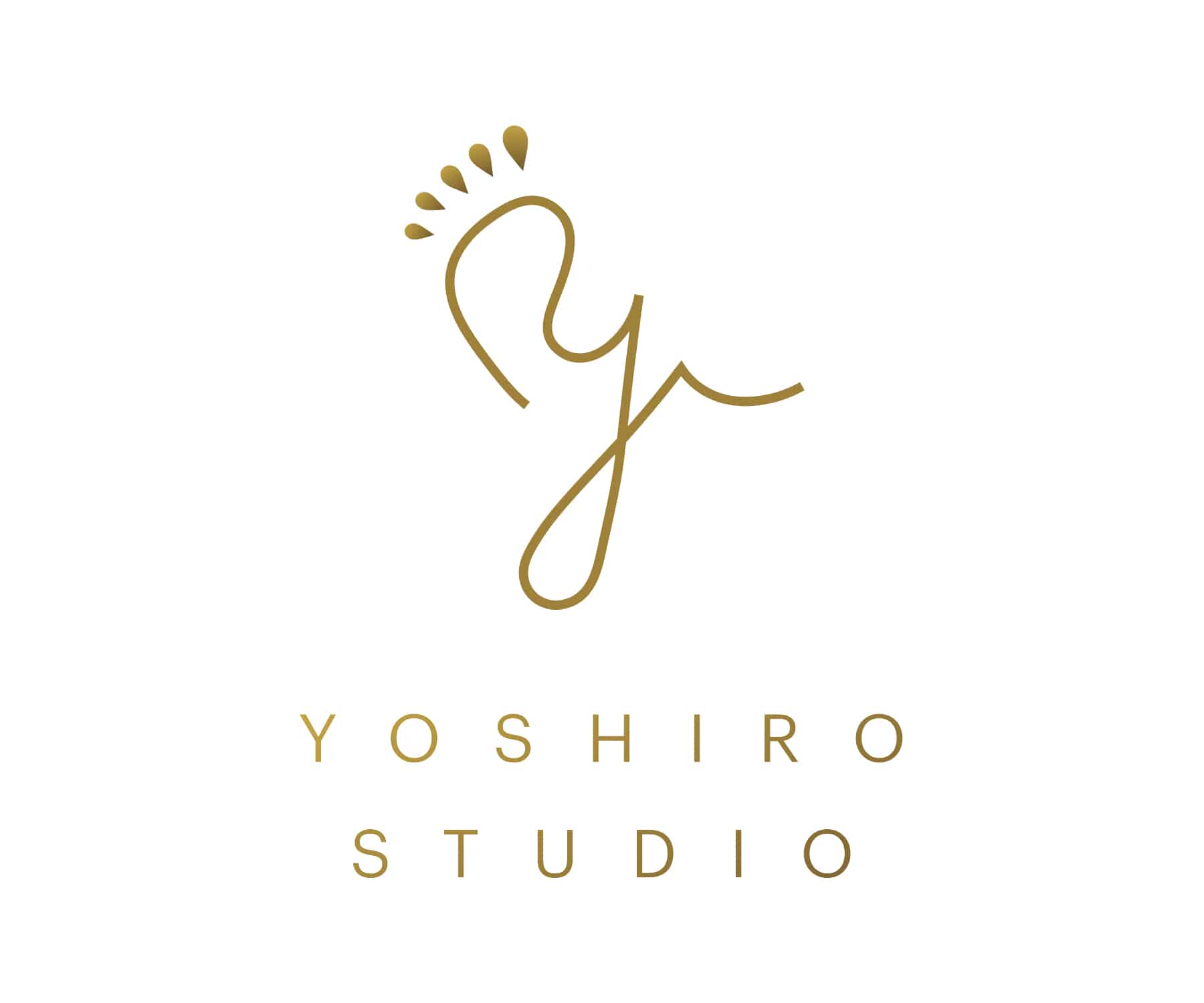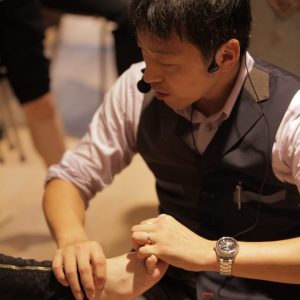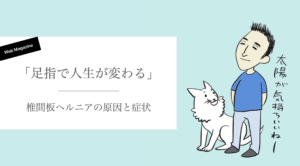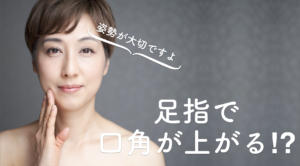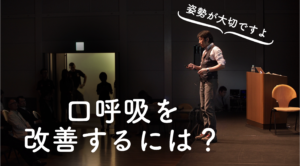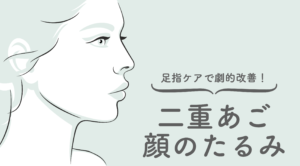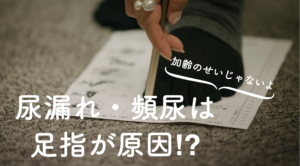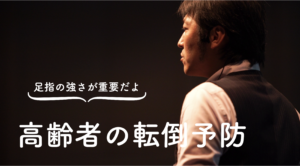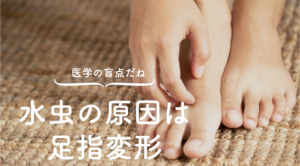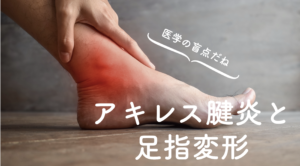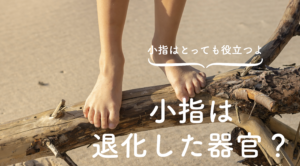Commentary by a toe doctor
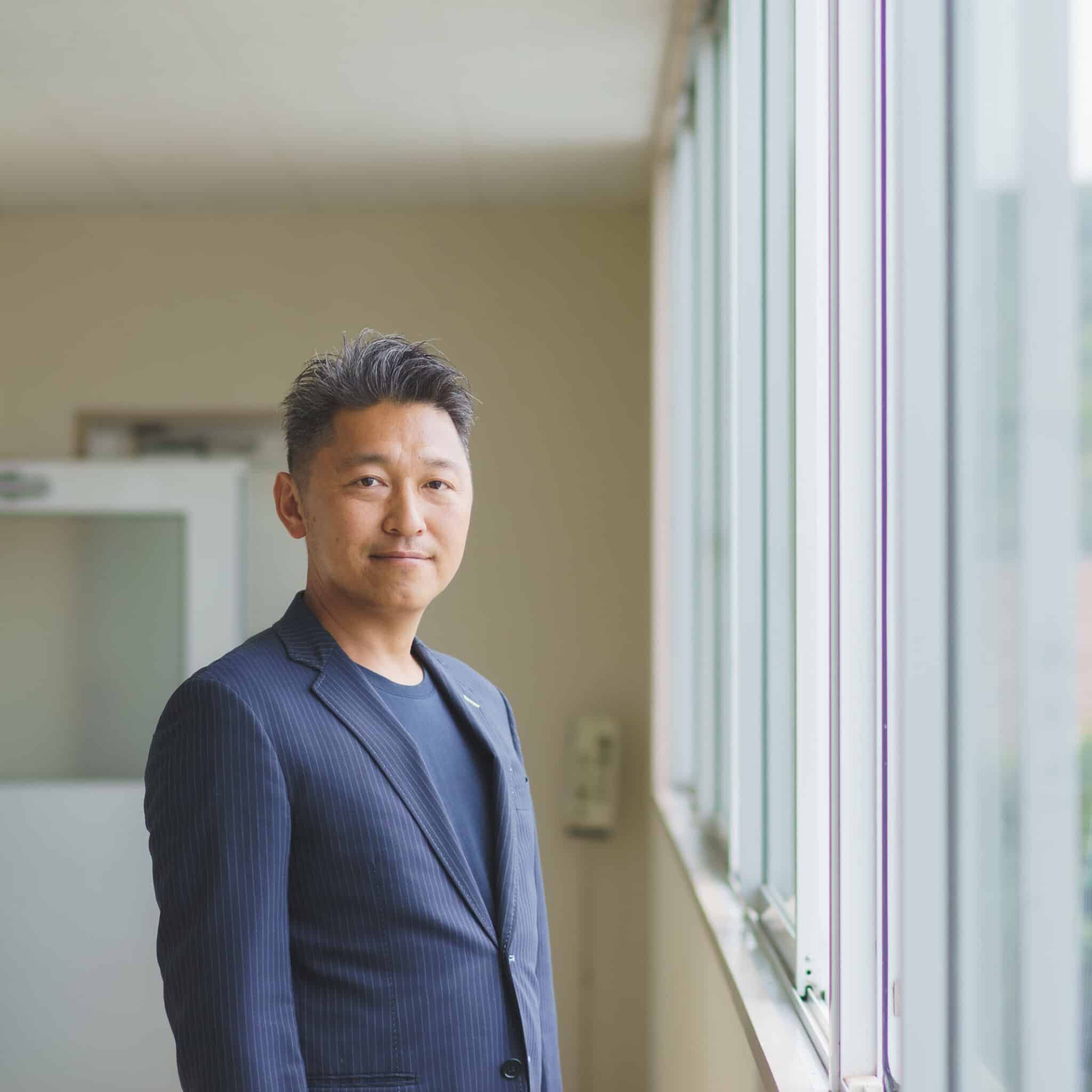
YOSHIRO YUASA
Keiro Yuasa
Dr. Toe, Director of Toe Research Institute, President of Japanese Society of Functional Foot and Toe Therapy, and developer of Halmek shoes. Former director, vice president, and medical director of General Hospital. He specializes in exercise physiology and anatomy. He is also a foot and shoe specialist and a leading expert in postural occlusion therapy. He has cured various orthopedic diseases (over 70,000 people) with toe therapy alone.
Introduction.
Herniated discs do not require surgery.. Causes of herniated discs include aging, overload, poor posture, and lack of exercise. Symptoms include back pain, sciatica, and numbness in the arms and legs, and although surgery may be necessary in severe cases, proper treatment can help to improve symptoms quickly.
summary
It is a condition in which the cartilage tissue called the disc in the spine tears and the gel-like substance inside it puts pressure on the nerves. This disc protrusion can put pressure on the nerves and spinal cord, causing symptoms such as pain, numbness, and muscle weakness.
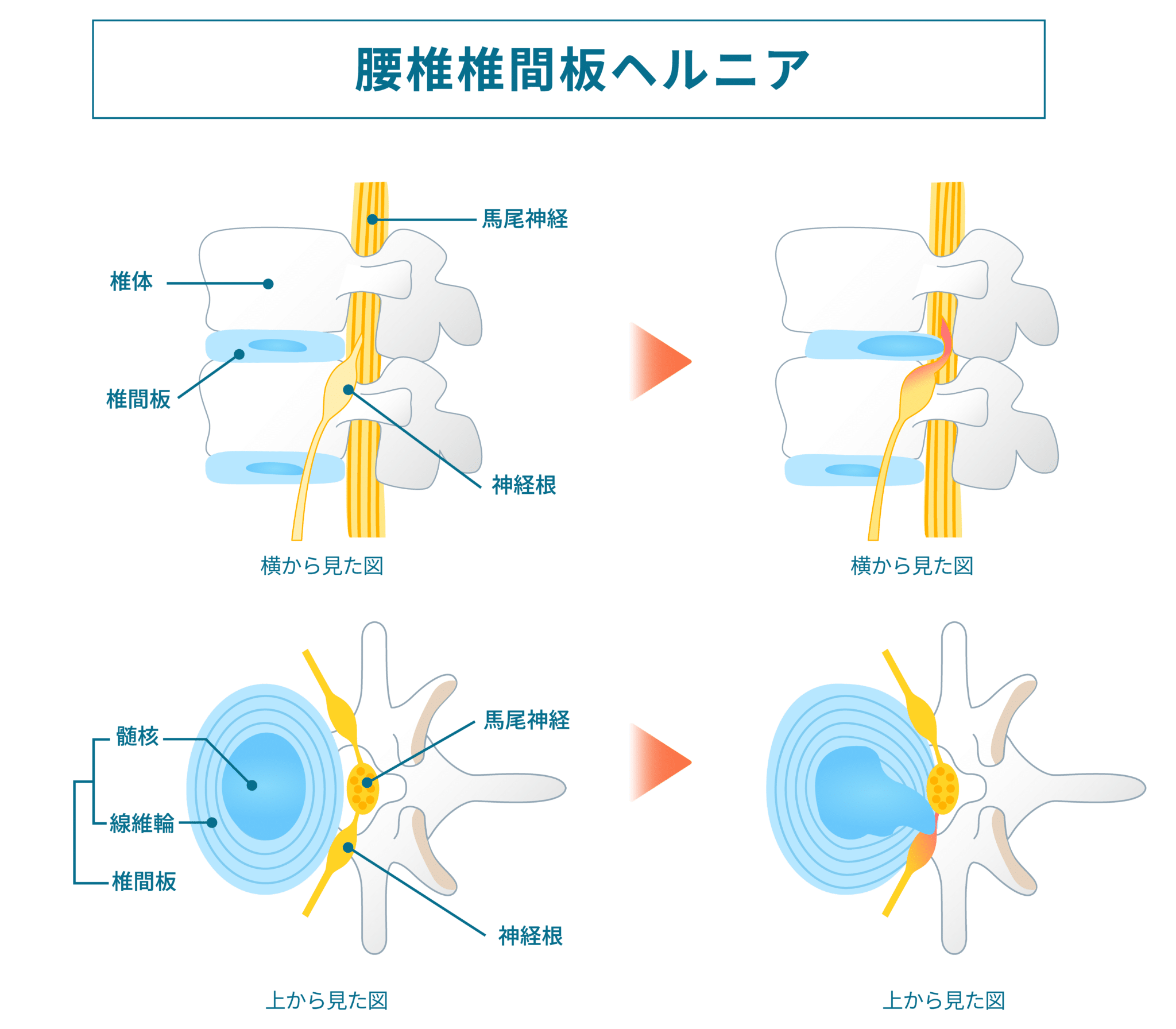
Herniated discs and posture are closely related.. A herniated disc is a condition in which a prolapsed disc in the lumbar or cervical spine causes pain and numbness by putting pressure on surrounding nerves and tissues. Poor posture disrupts the proper bending of the spinal column, which can easily stress the discs. Continued stooping or unnatural body posture is especially likely to put pressure on the discs.
Good posture keeps the spine in the correct position and reduces the strain on the intervertebral discs. In order to maintain proper posture, it is also important to return your normal posture to the neutral position, which is the ideal posture,It is important to correct the toes in order to maintain correct postureIt is.
symptoms
The main symptoms of a herniated disc include
1. Low back pain or sciatica: This is caused by compression or damage to the intervertebral discs in the lumbar spine or sacrum. In the case of sciatica, pain and numbness may be felt from the lower back to the buttocks, thighs, and lower legs.
2. Muscle numbness or weakness: A herniated disc compressing a nerve may cause numbness or weakness without proper signaling to the muscles.
3. Severe leg and back pain: symptoms may worsen, especially when moving or bending forward.
4. Abnormal sensation or numbness: may be felt especially in the buttocks and lower extremities.
5. Muscle stiffness and pain: A herniated disc can cause inflammation of the surrounding tissues and nerves, which can lead to muscle stiffness and pain.
If these symptoms are present, it is important to seek appropriate treatment as soon as possible.
Causes and pathogenesis
Factors in the development of herniated discs
The main cause of a herniated disc is due to the jelly-like nucleus inside the disc passing through the fiber ring on the outside of the disc. When this fiber ring is damaged or weakened and the nucleus leaks out, a herniated disc occurs. Common medical causes of this include the following.
1. Aging: With age, the intervertebral discs undergo degenerative changes and weaken, making herniation more likely.
2. Injury or trauma: External forces such as car accidents or sports can damage the intervertebral discs and cause herniation.
3. Overwork: Work that puts strain on the lower back, such as prolonged work in the same position or lifting, can cause this condition.
4. Heredity: Genetic factors can affect the structure and strength of the intervertebral discs, leading to the development of herniation.
Herniated disc is one of the causes of poor postureIt is believed that Correct posture reduces the strain on the hips and back and relieves pressure on the intervertebral discs. Therefore, continued poor posture can put additional stress on the discs and make the herniation worse. So, to avoid herniated discs,It is important to return to correct posture and daily lifeIt is.
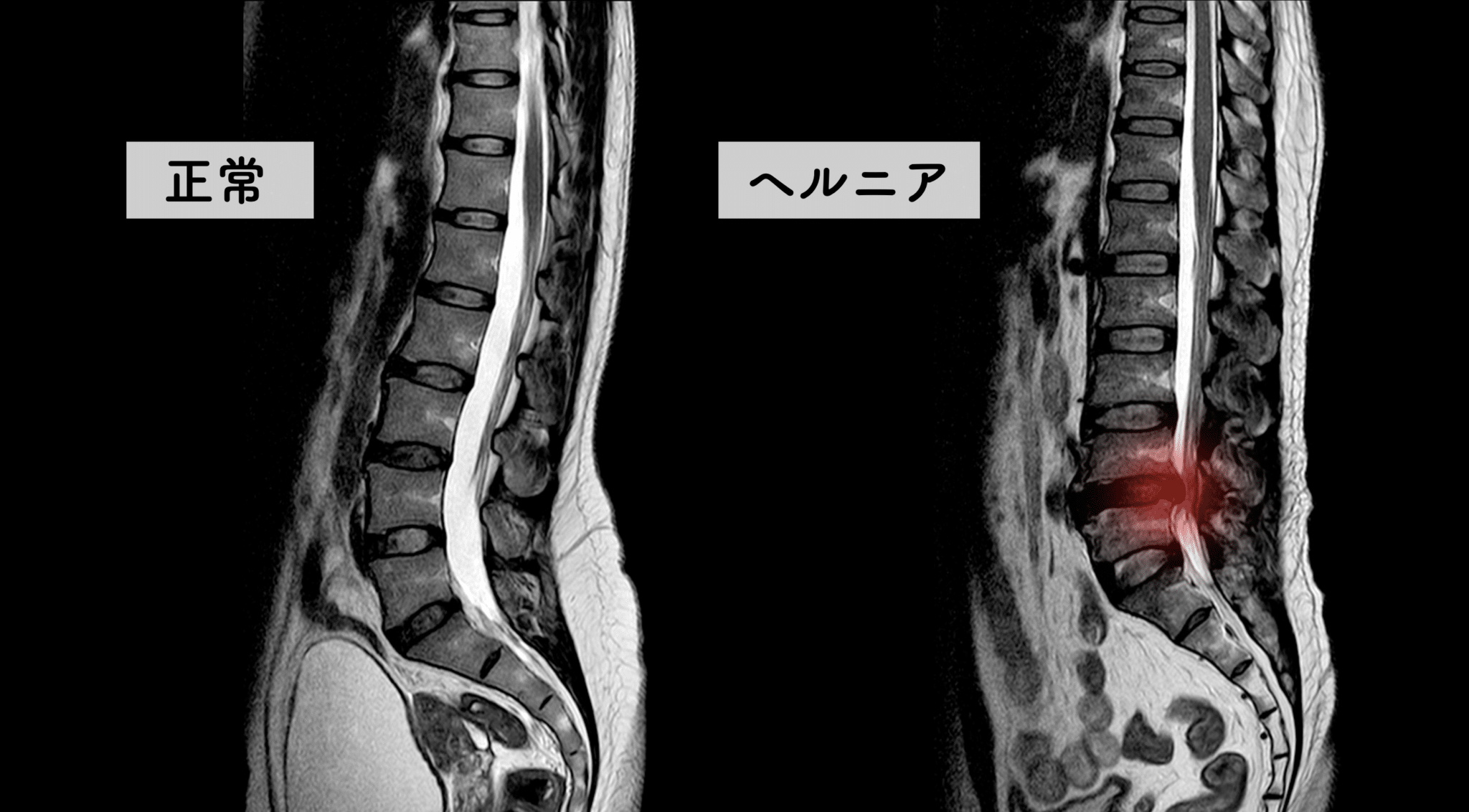
Take a look at the picture above.MRI pictures of a normal person and a person with a herniated disc.The red area is the nucleus pulposus (nucleus pulposus) of the intervertebral disc protruding and compressing the nerve. What do you think is the difference between a normal person and a person with a herniated disc?
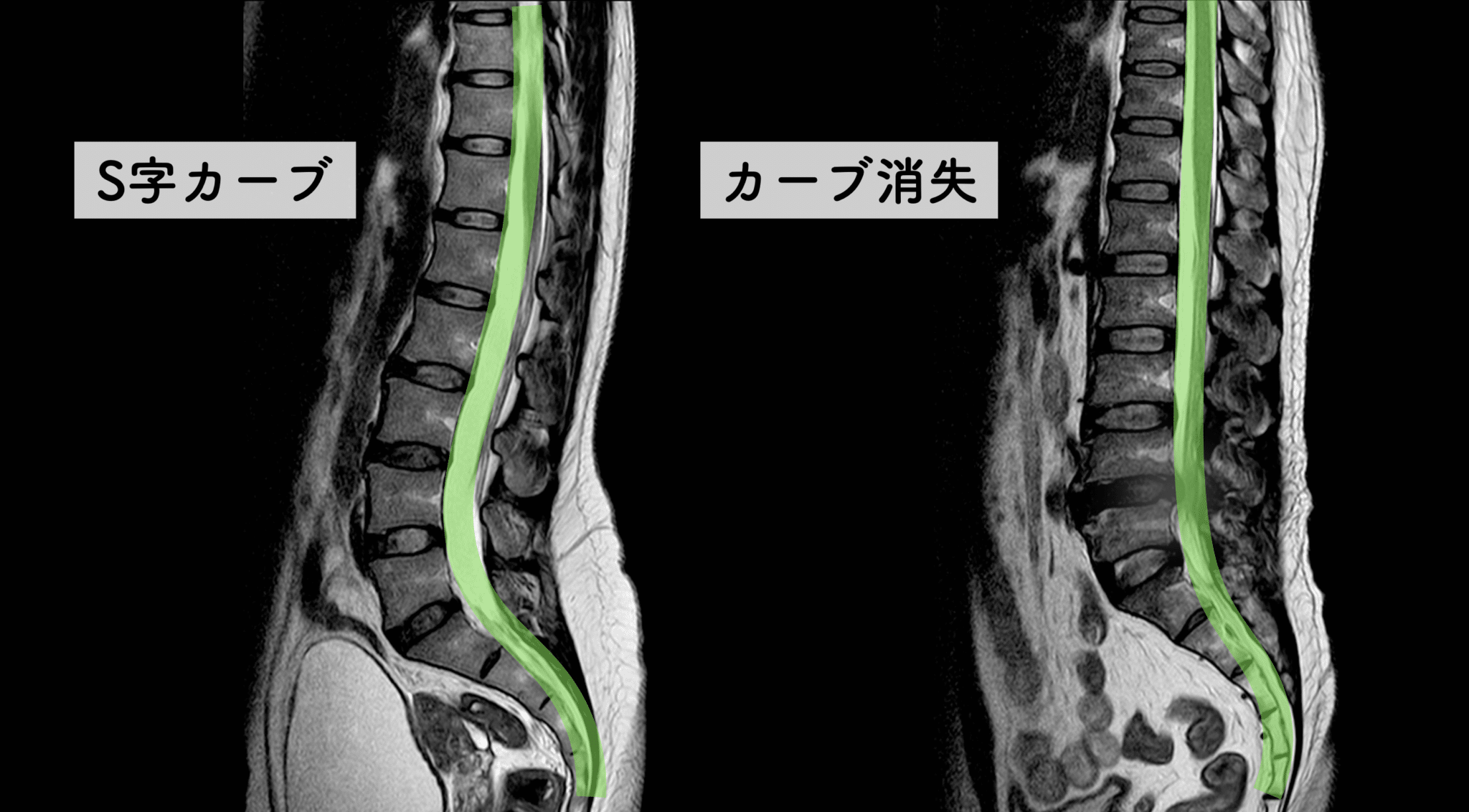
It is "posture. In the photo on the left (normal), the spine has an ideal curve with an S-shaped kyphosis, while in the photo on the right (hernia), the spine is straight. This is the so-called "flat back" or "hunchback" type.
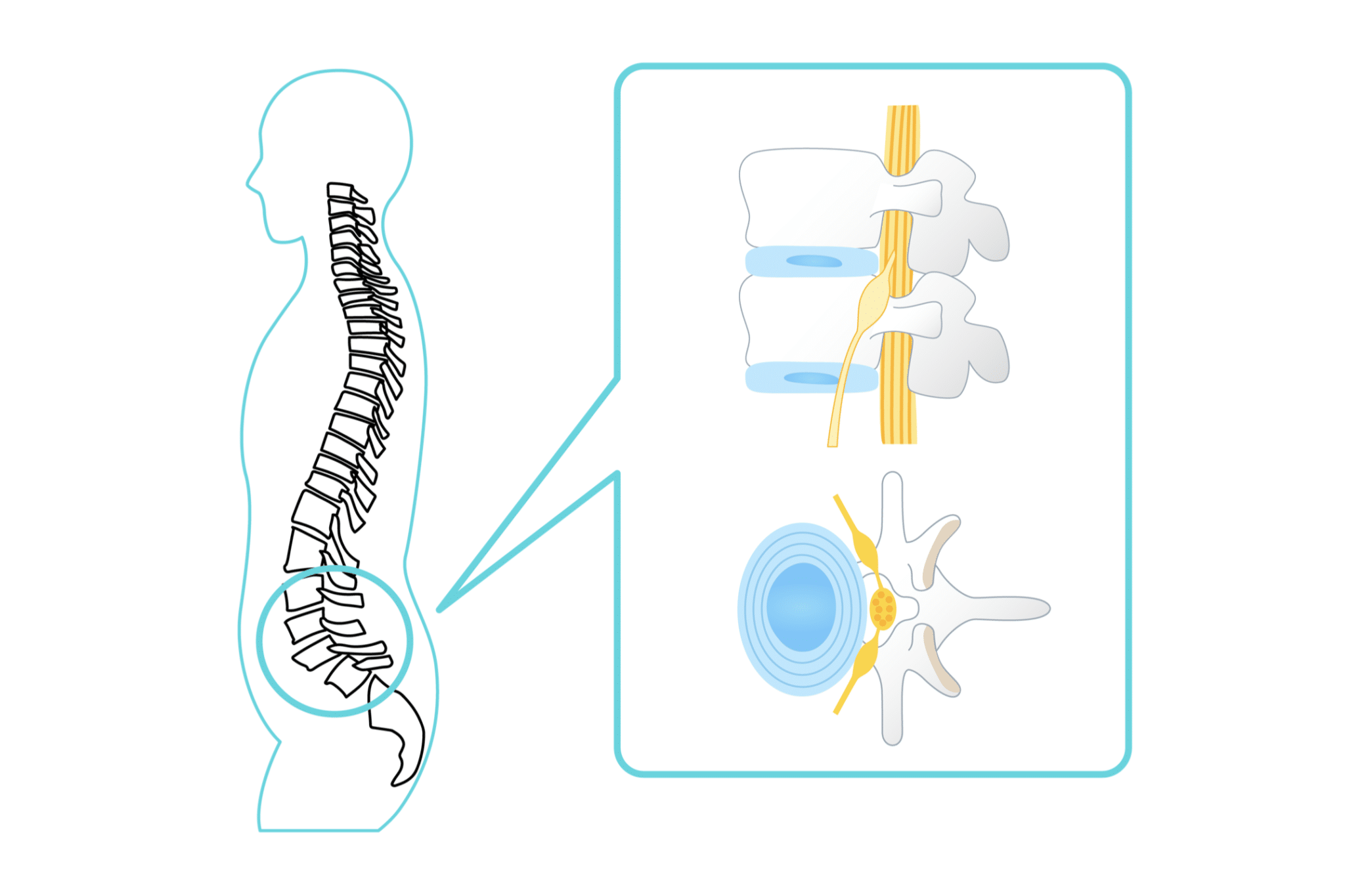
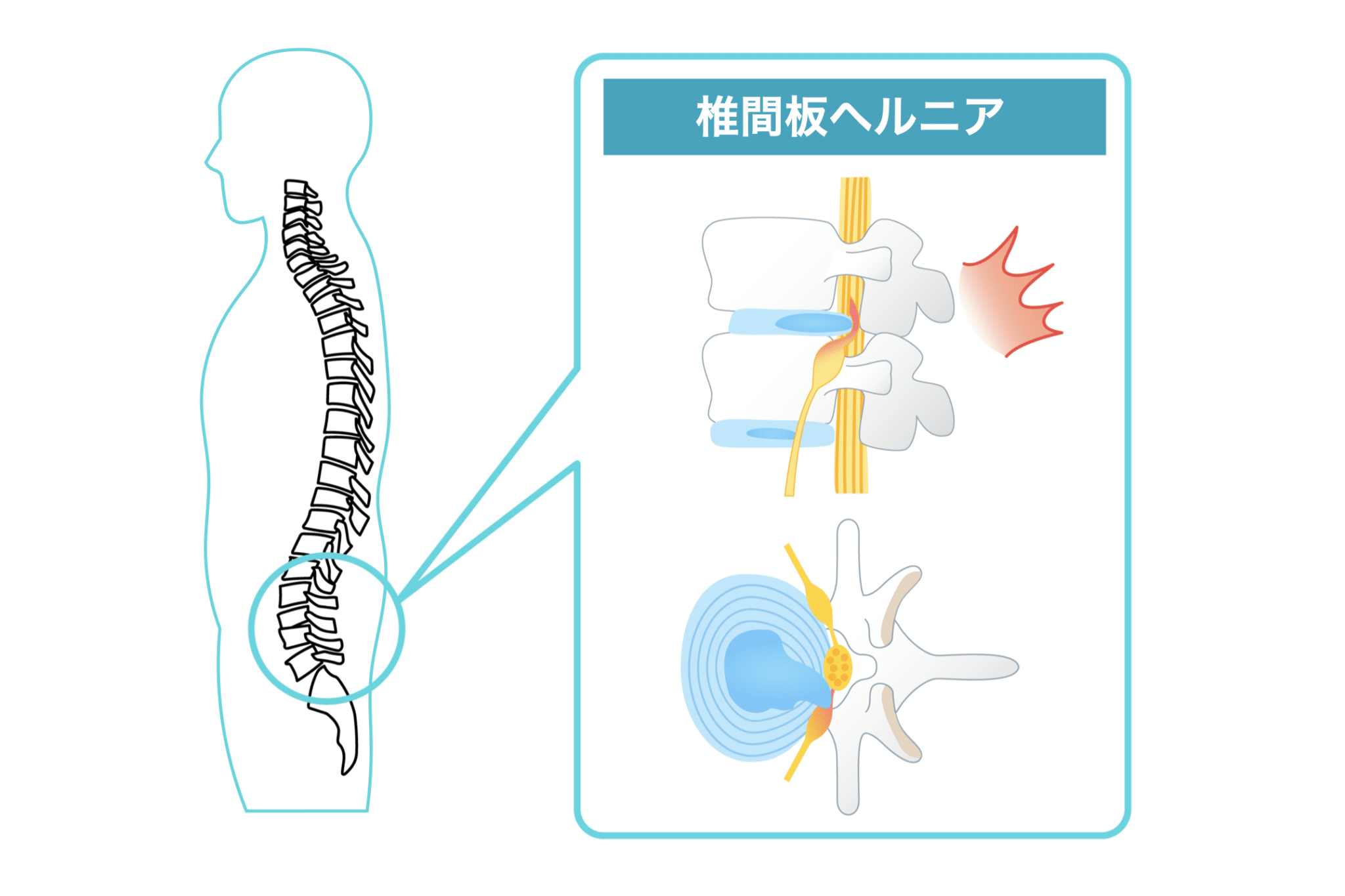
Flat back and hunchback are not physiological S-curves.The MRI shows only the bad part of the disc, which is the lower back, but it is the posture that causes the nucleus pulposus to protrude. The cause of the herniated nucleus pulposus is "posture.
Posture Classification
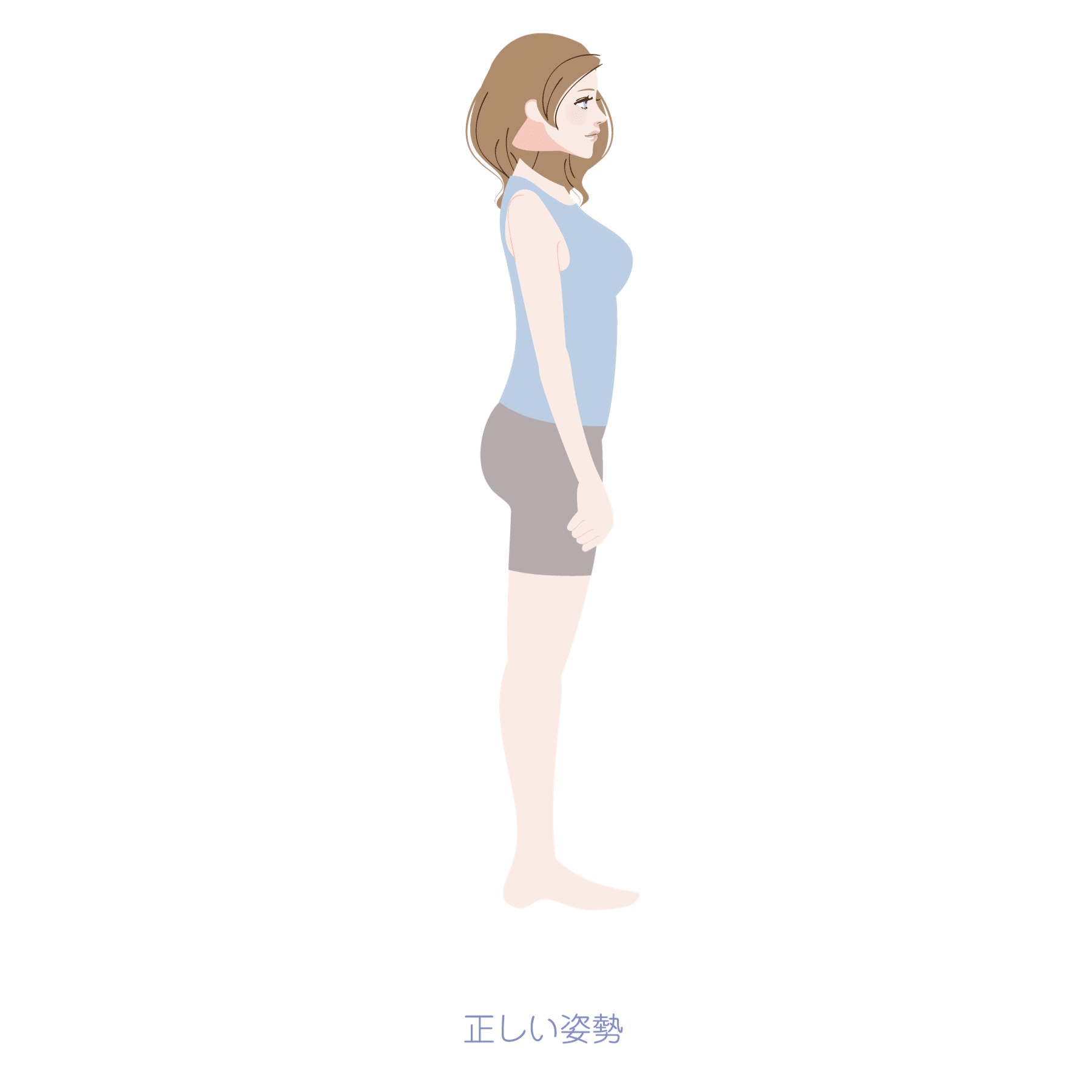
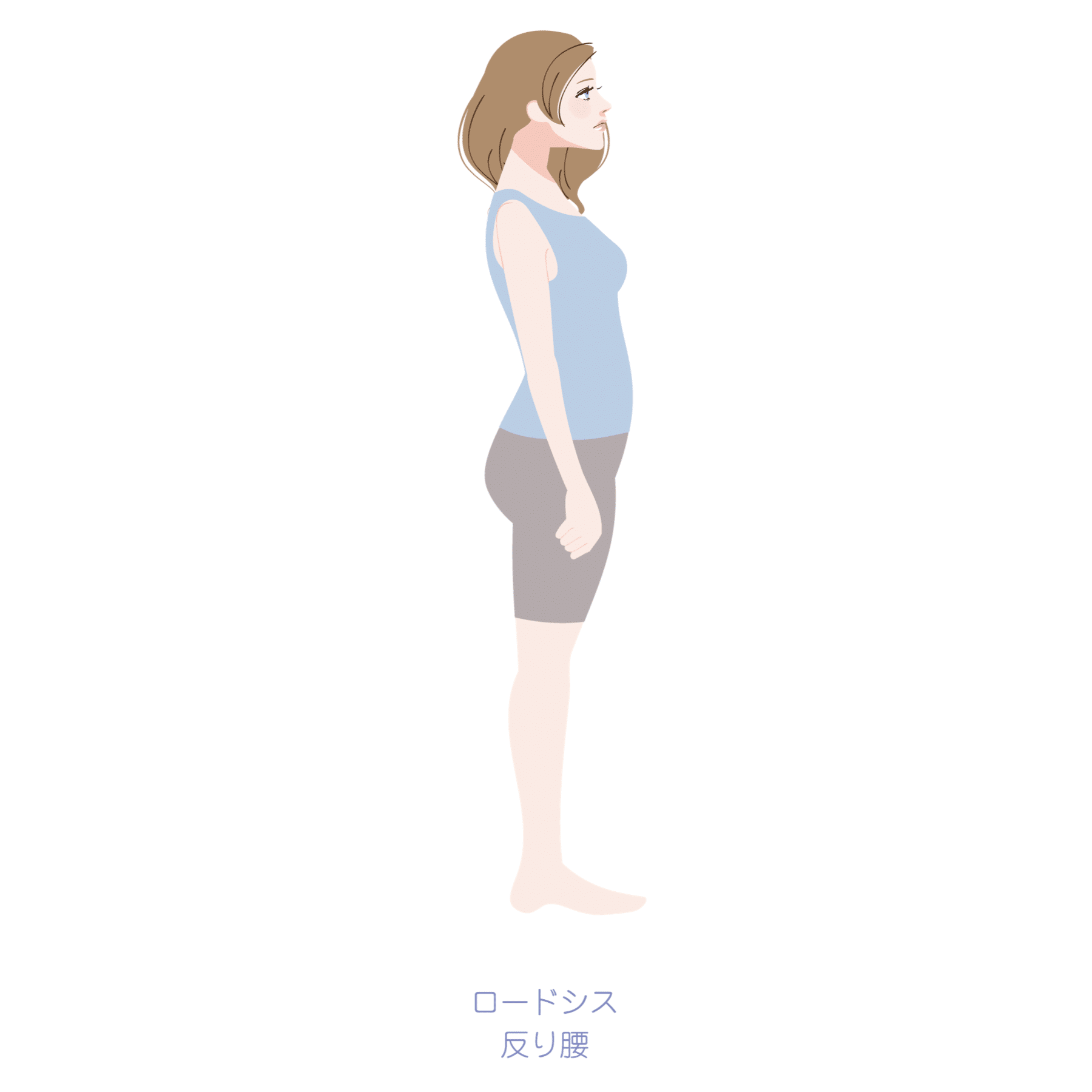
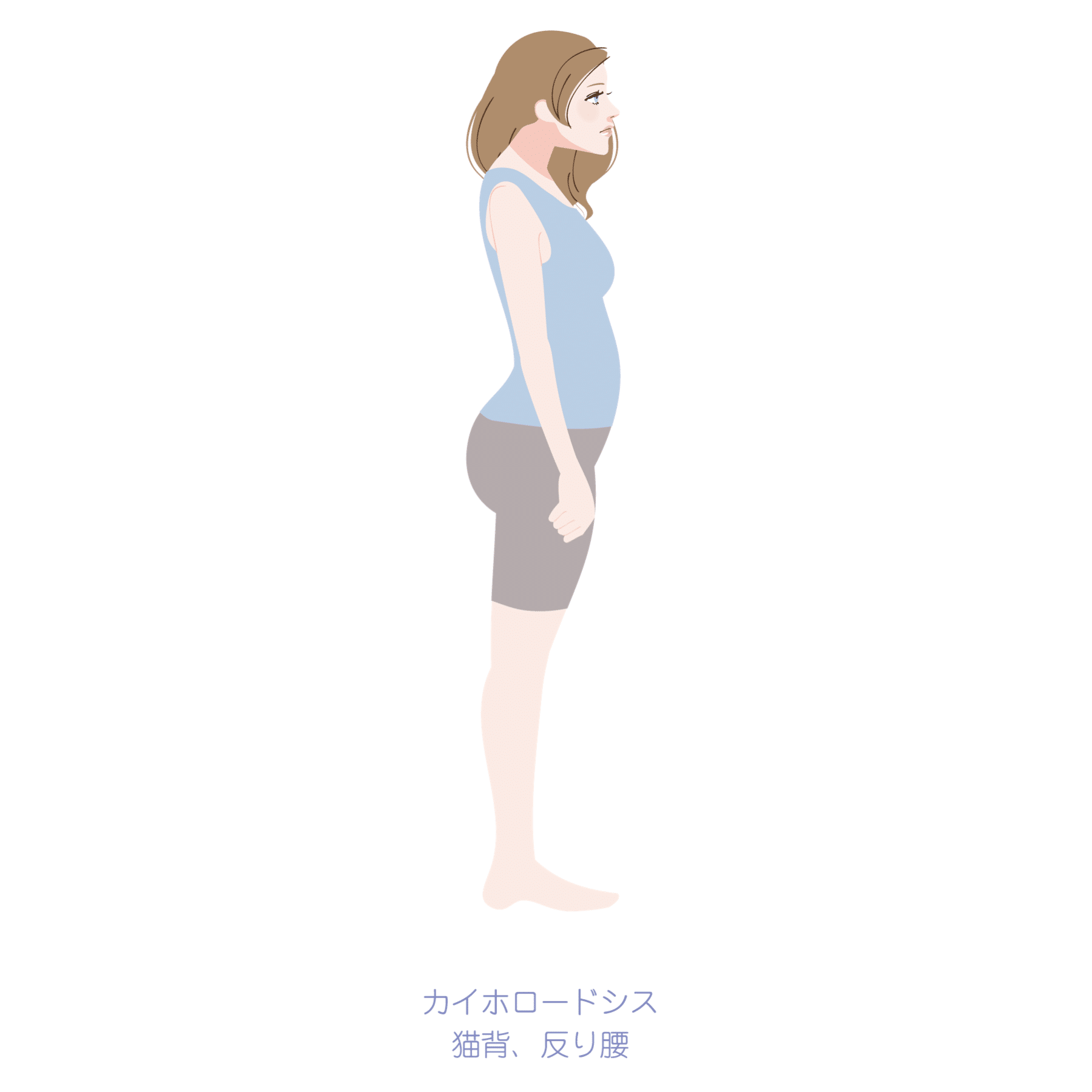
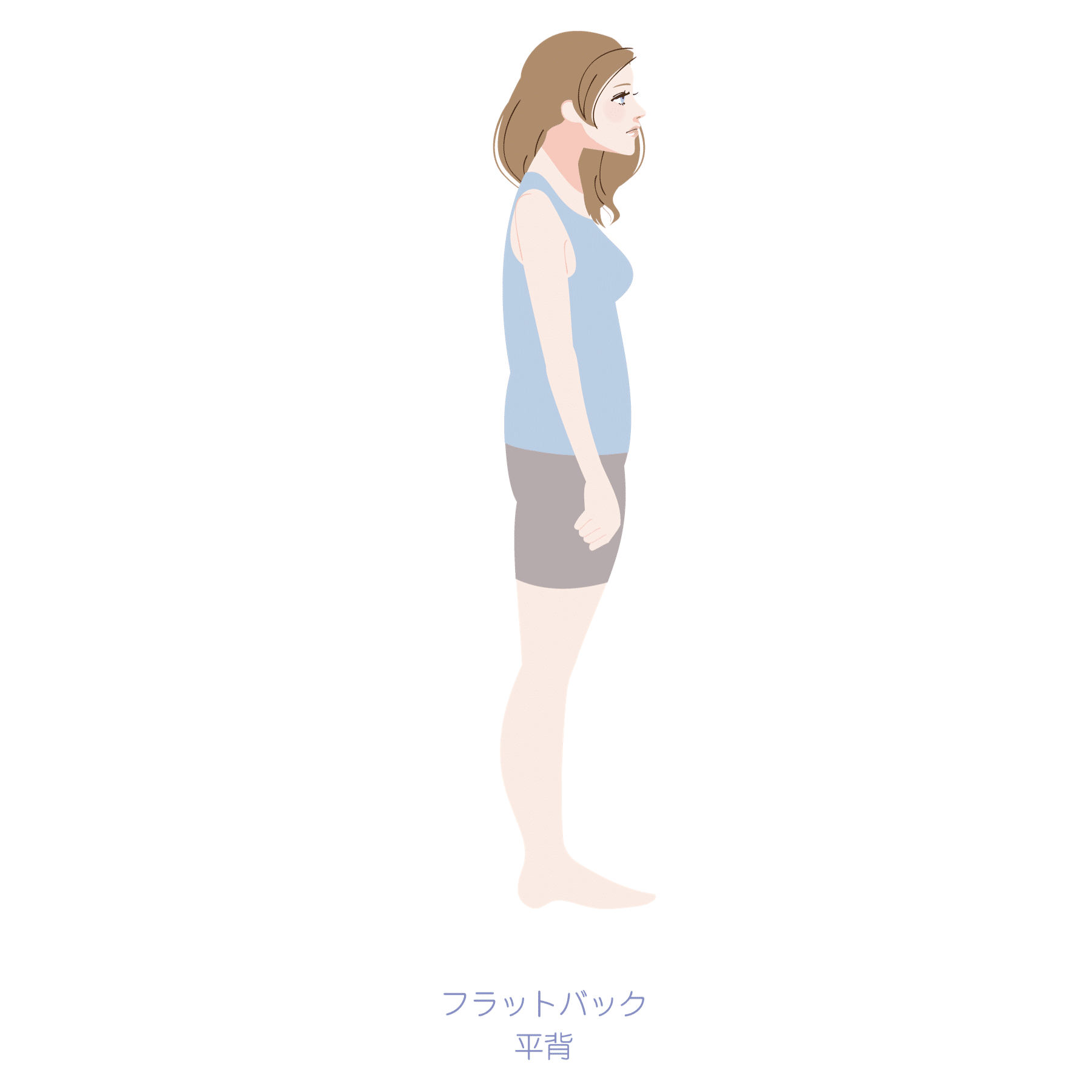
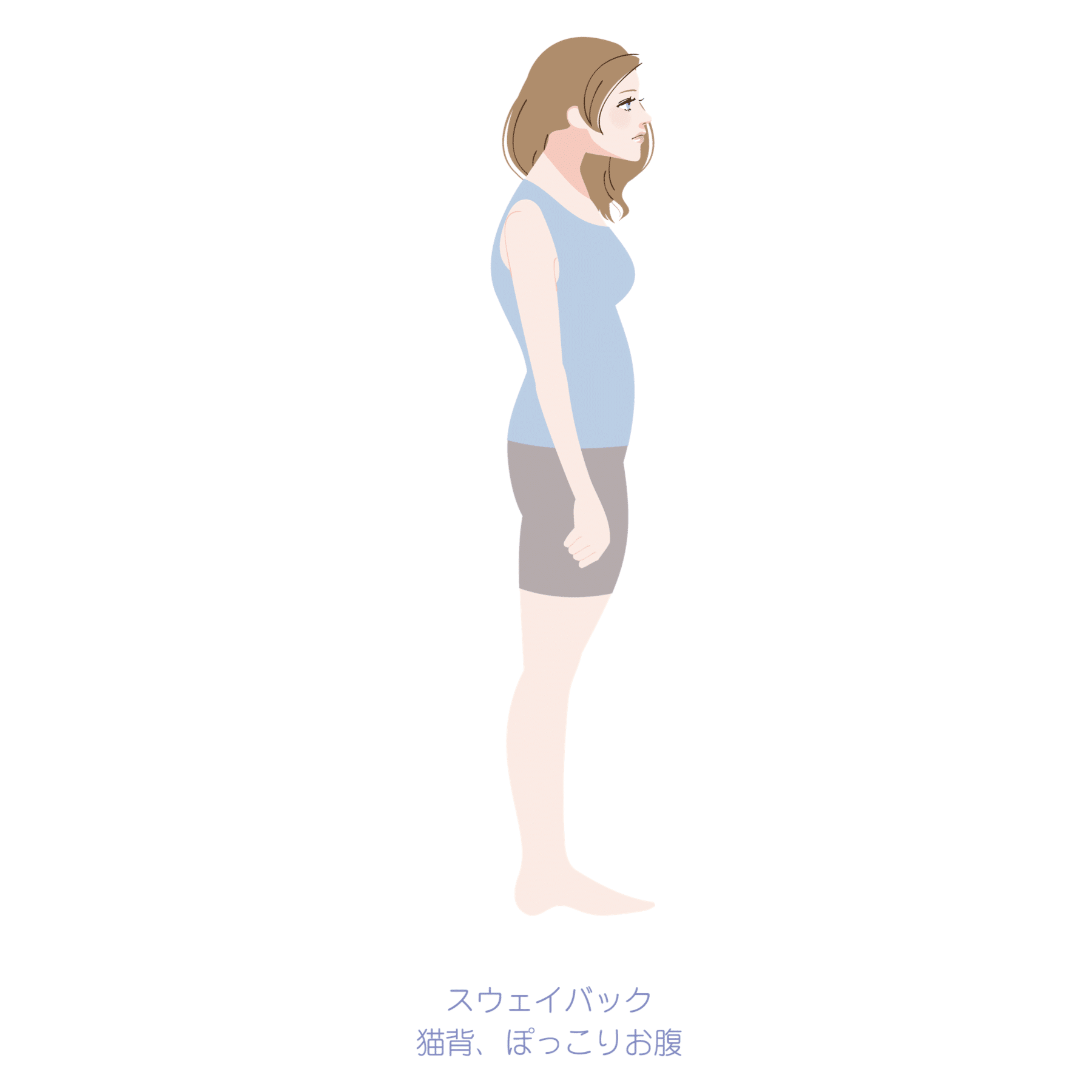
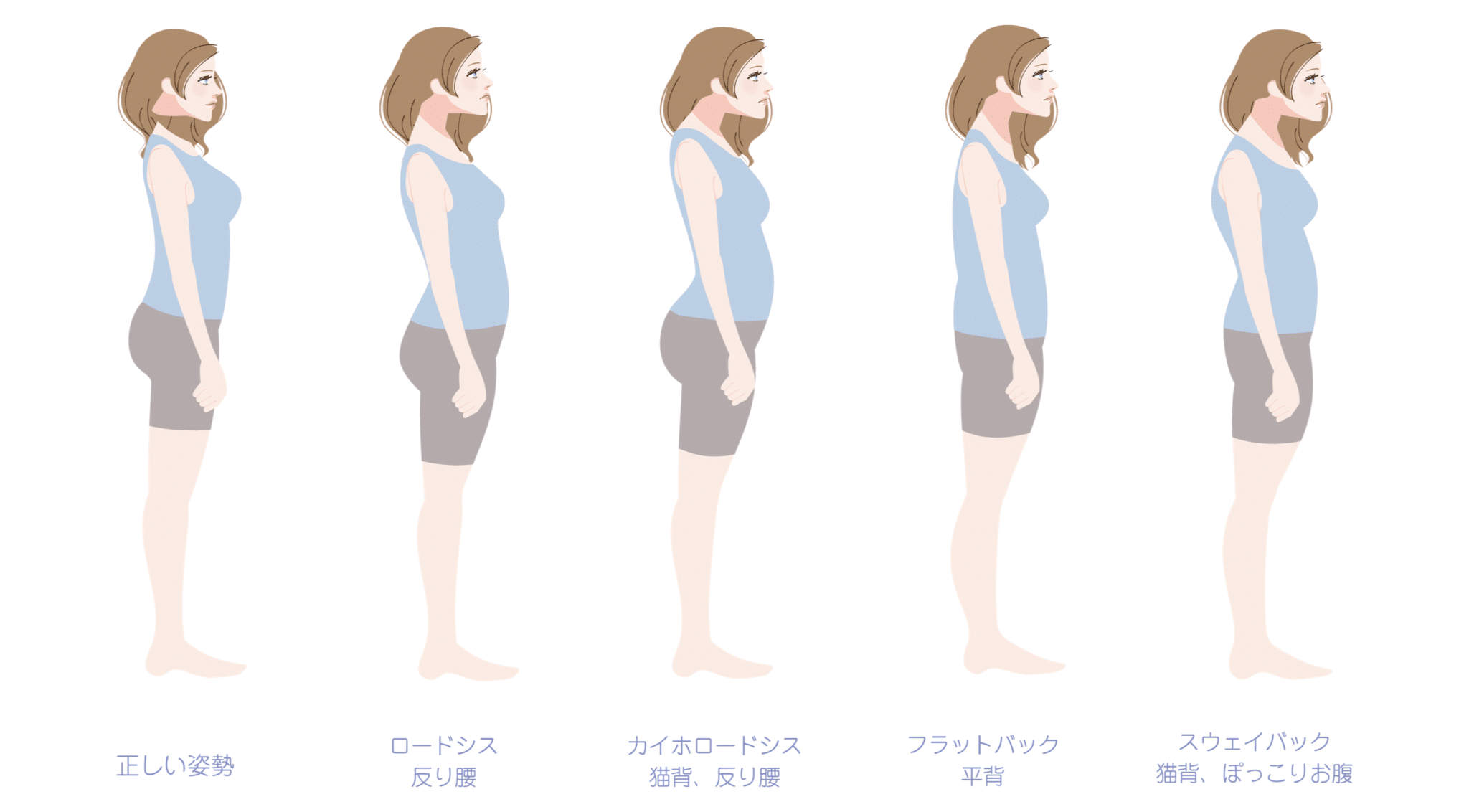
From the characteristics of spinal kyphosis.Lordosis (warped back), ,Chi-horosis (hunchback + warped back), ,Flat back (flat back), ,Swayback (hunchback)The four categories are as follows. This classification is widespread worldwide as a general postural classification. Of these, we clinically feel that hernias are more common in people with a "flat back" (flat back).
Differences in spine curve between normal and herniated people.
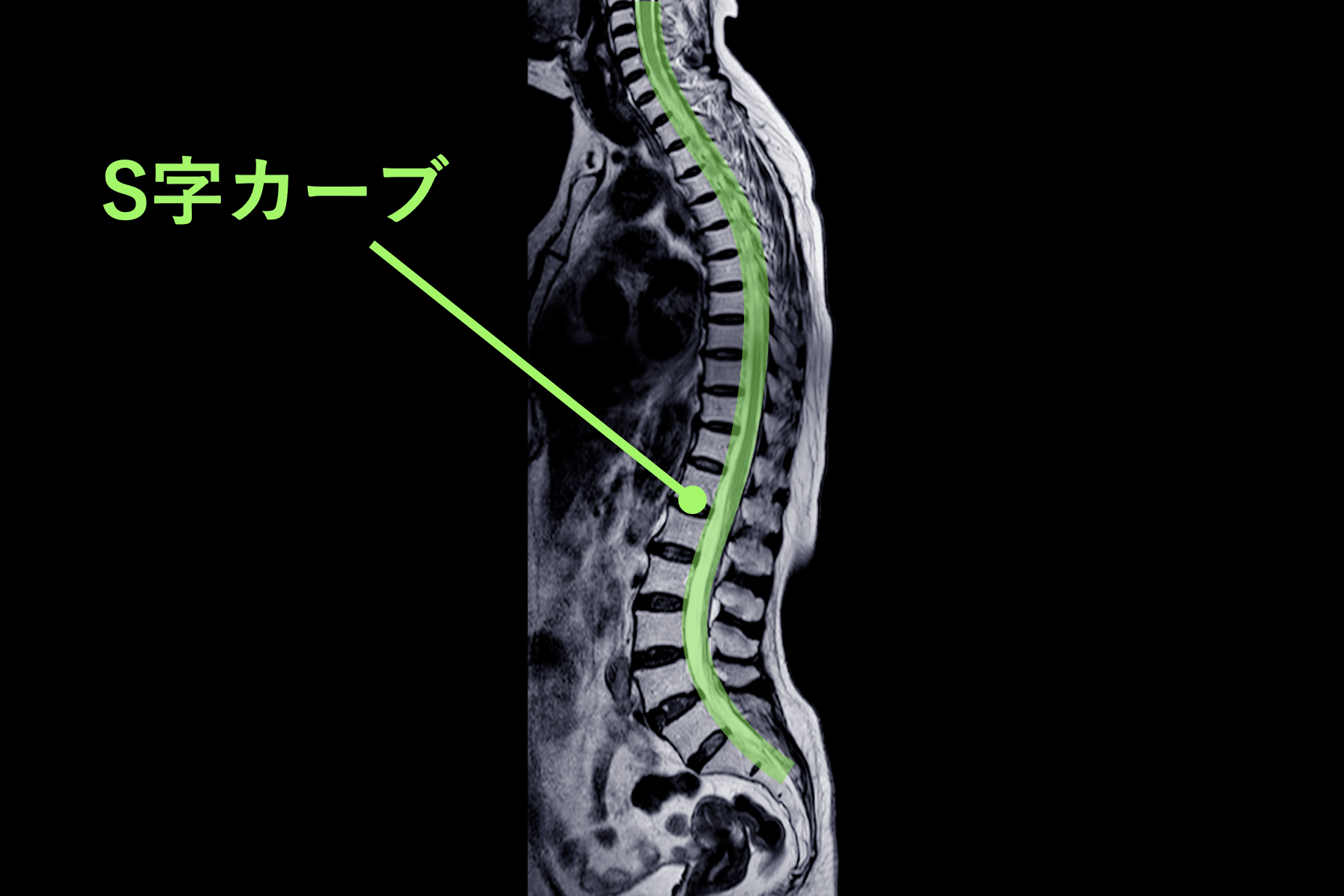
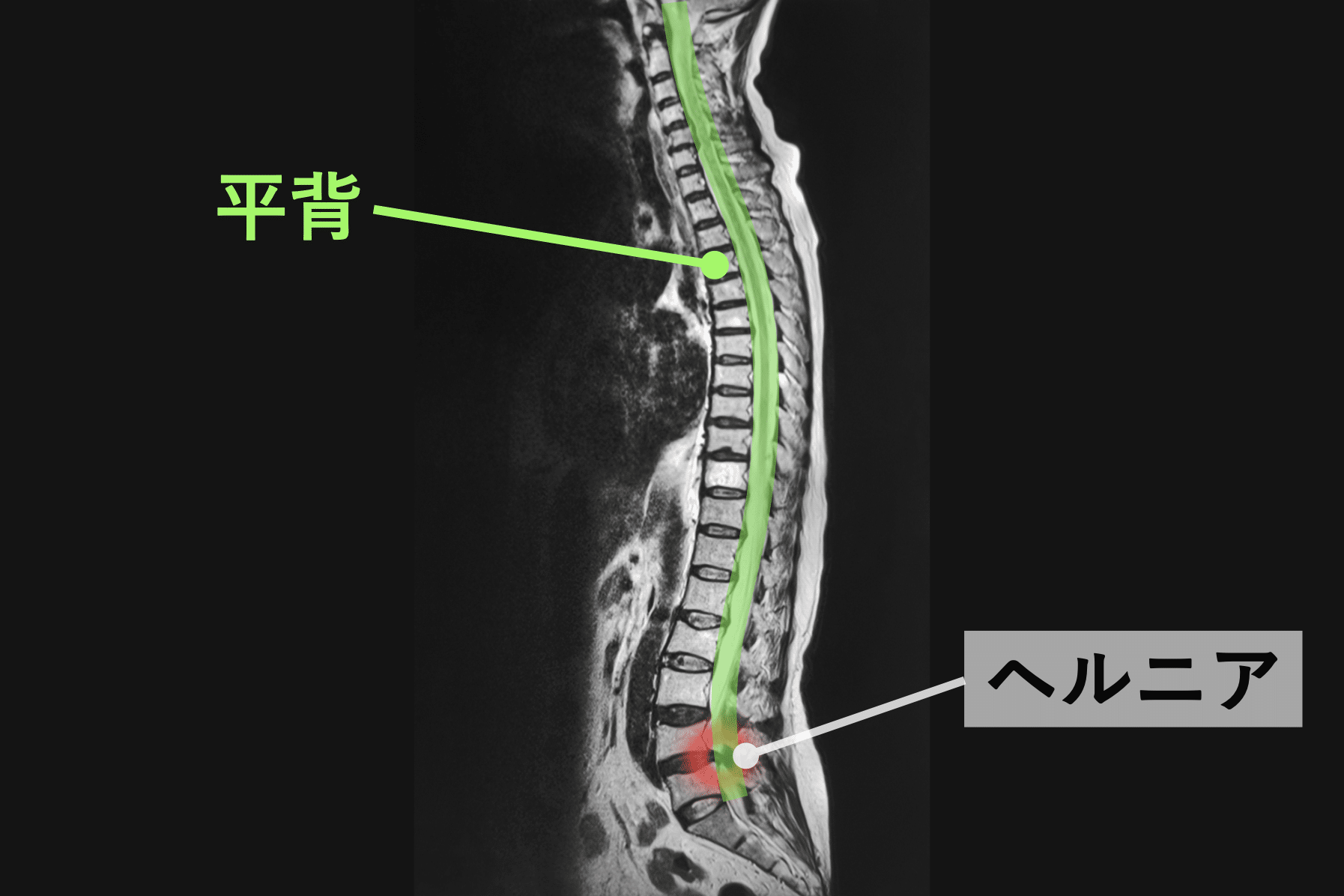
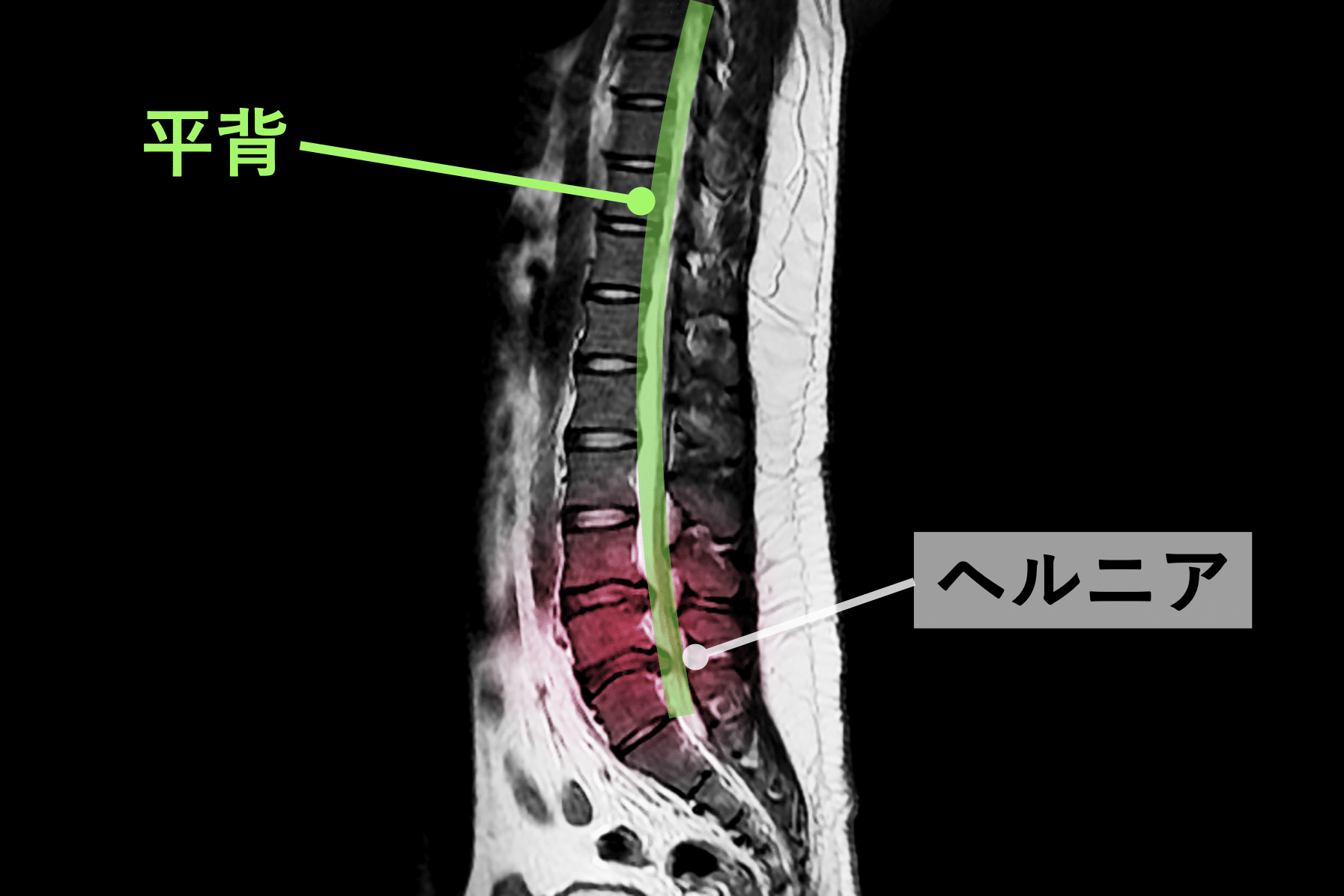
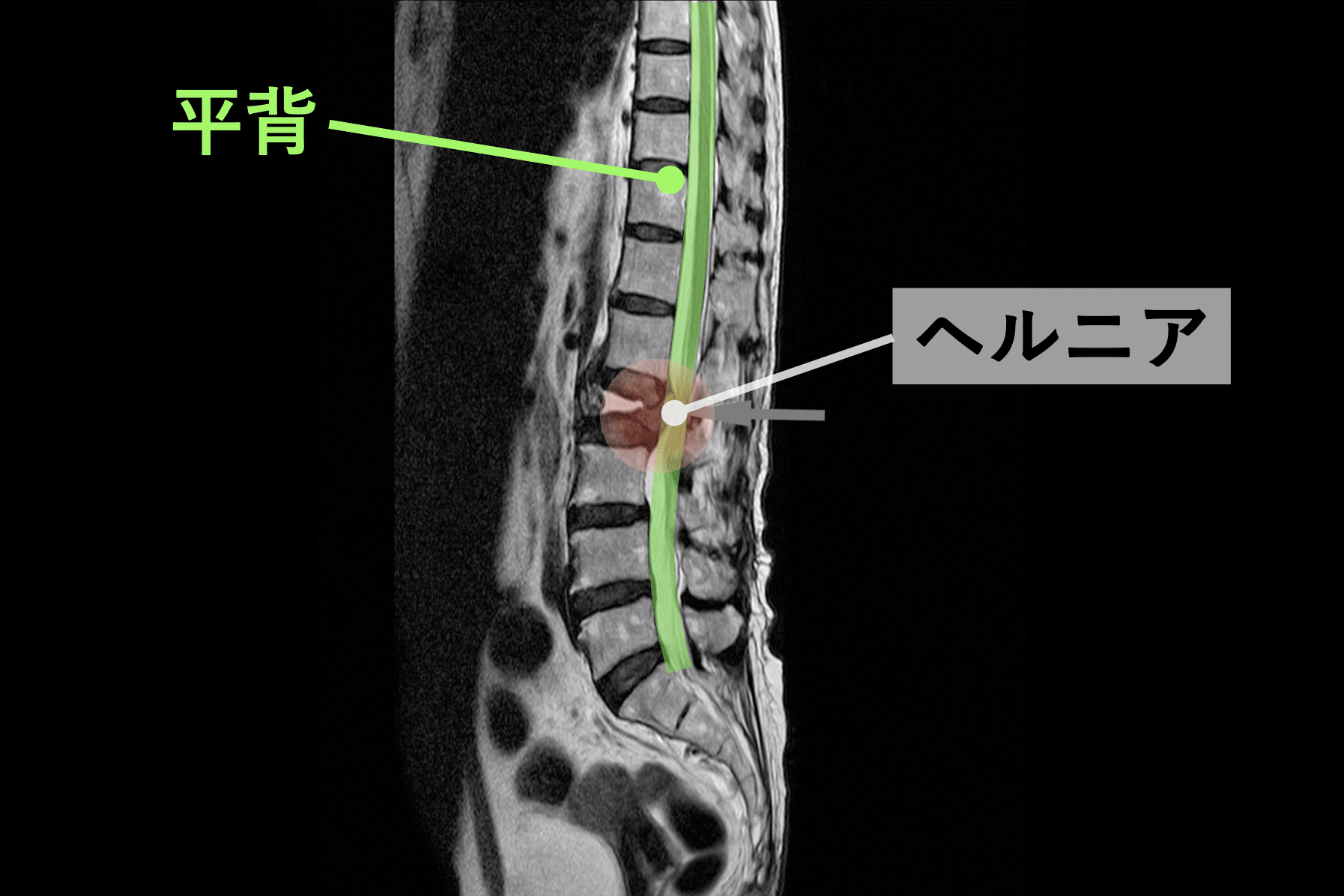
Mechanism of disc herniation (1)
Let's take a closer look. Normally, the human spine has an S-shaped curve. They are not arranged in a straight line as in the previous illustration. Take a look at the illustration below.
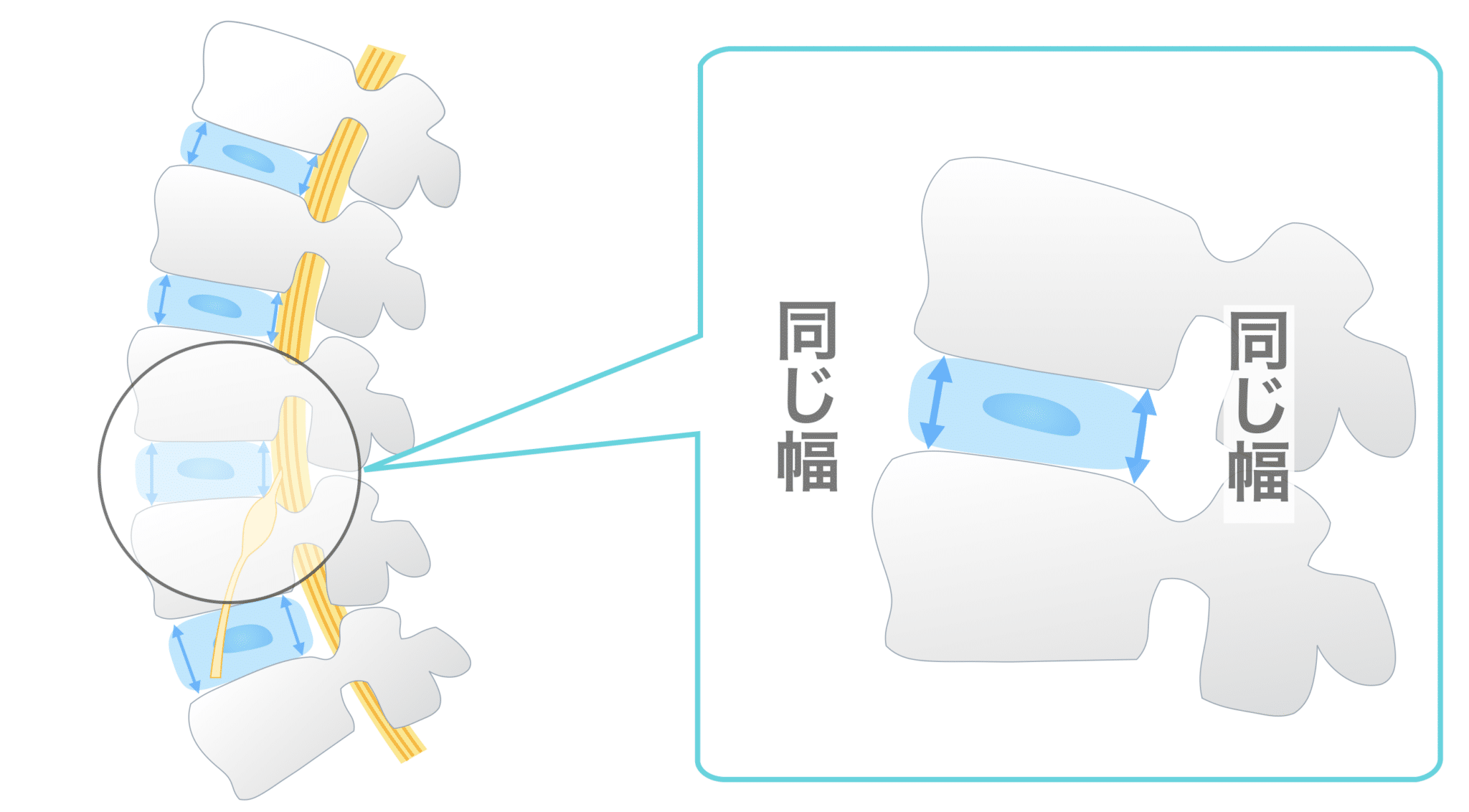
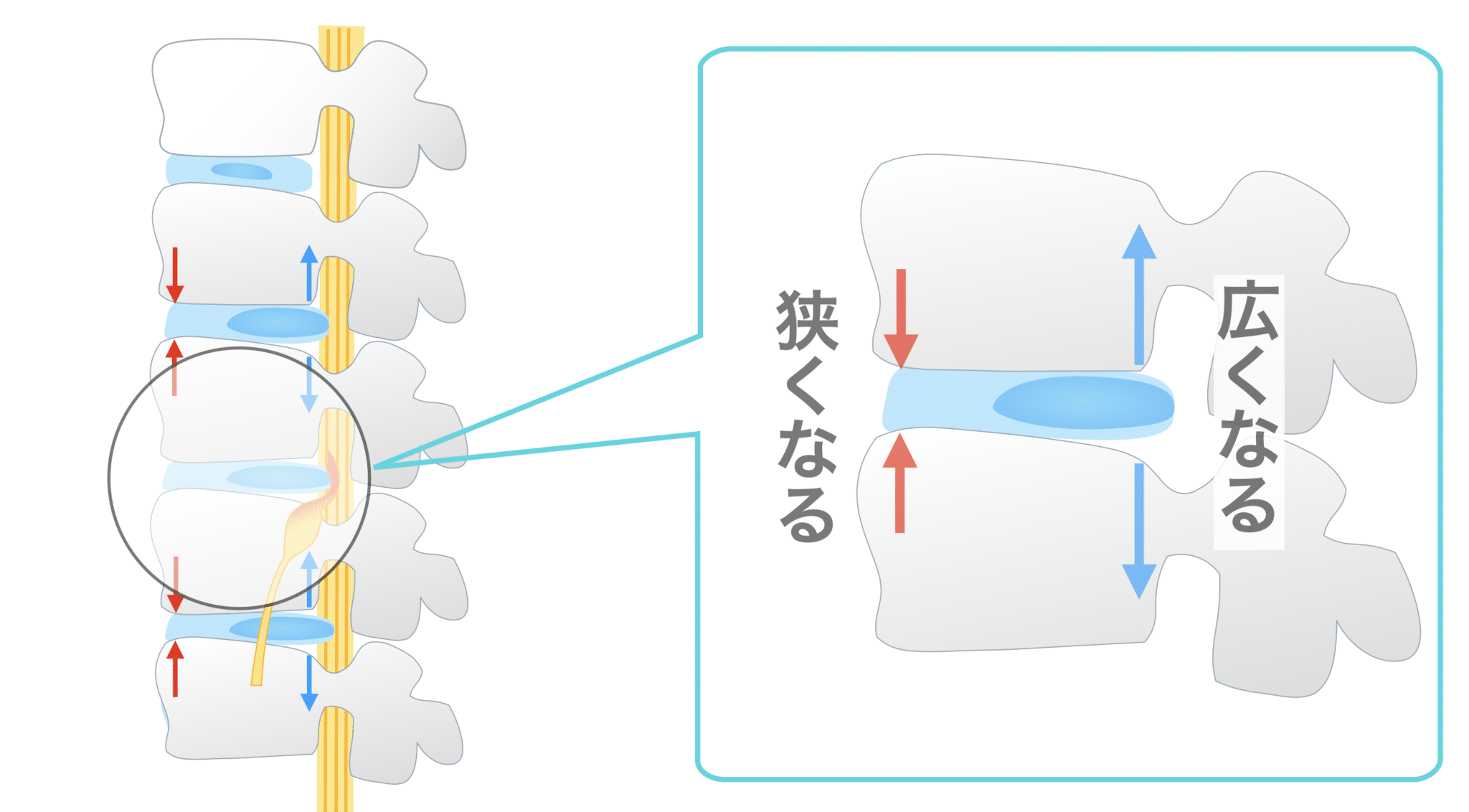
In the normal S-curve condition, the width of the discs in the front and back of the spine are approximately the same. However, when the S-curve of the spine is eliminated and the spine is straightened, there is a difference in the width of the discs in the front and back of the spine.
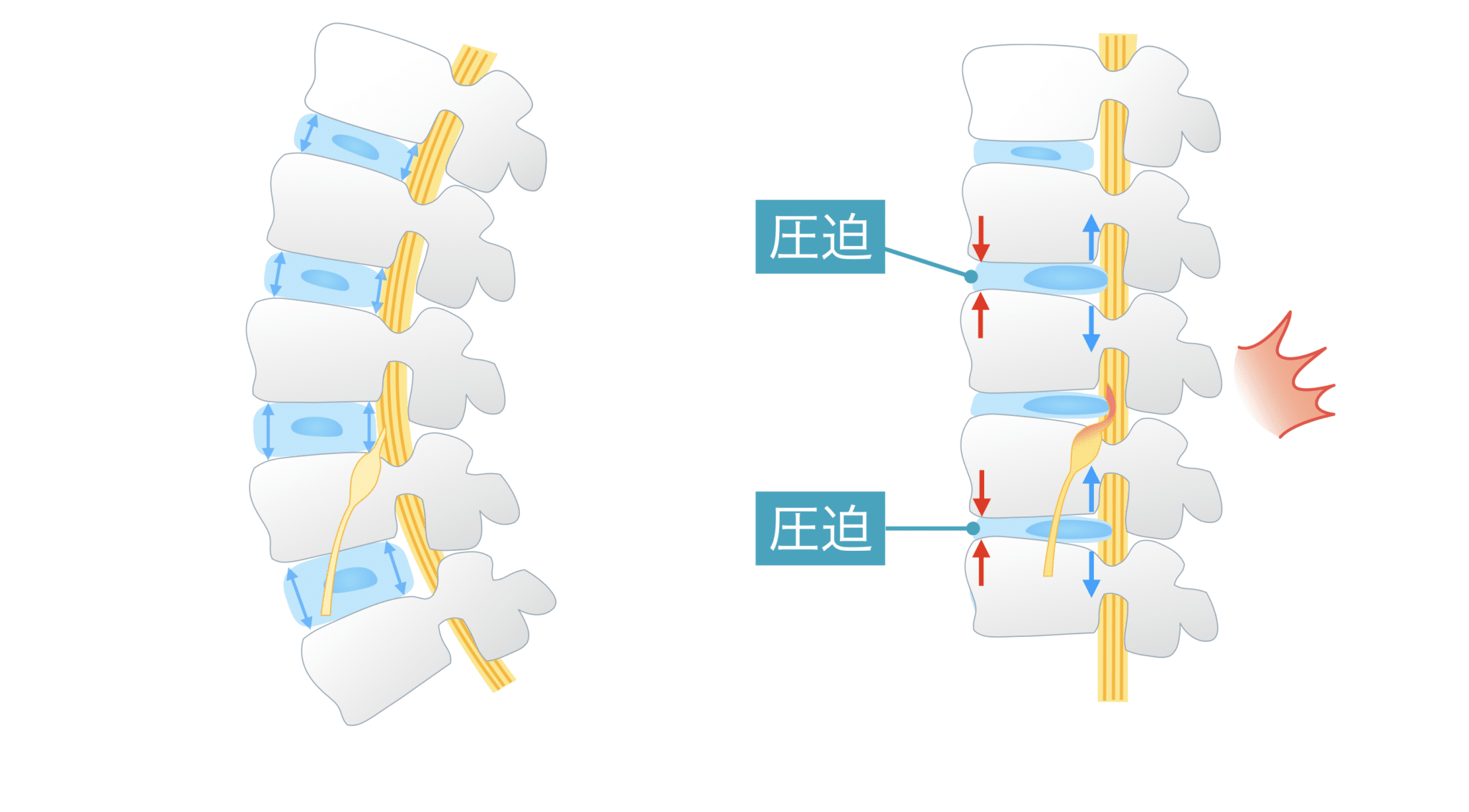
This will cause the anterior portion of the bone to compress and create a pressure differential in the intervertebral disc. The crushed disc tries to release the pressure to the widened posterior part. At that time, the nucleus pulposus protrudes from the bone and compresses the nerve, resulting in a herniated disc.
Mechanism of disc herniation (2)
A simple explanation,(1) Type of shoes and how to wear them → (2) Toe deformity (clawed toe, floating toe) → (3) Backward center of gravity → (4) Backward/forward pelvic tilt → (5) Hunchback/warped back → (6) Loss of physiological S-shaped curve → (7) Herniation of intervertebral discThis is the mechanism that
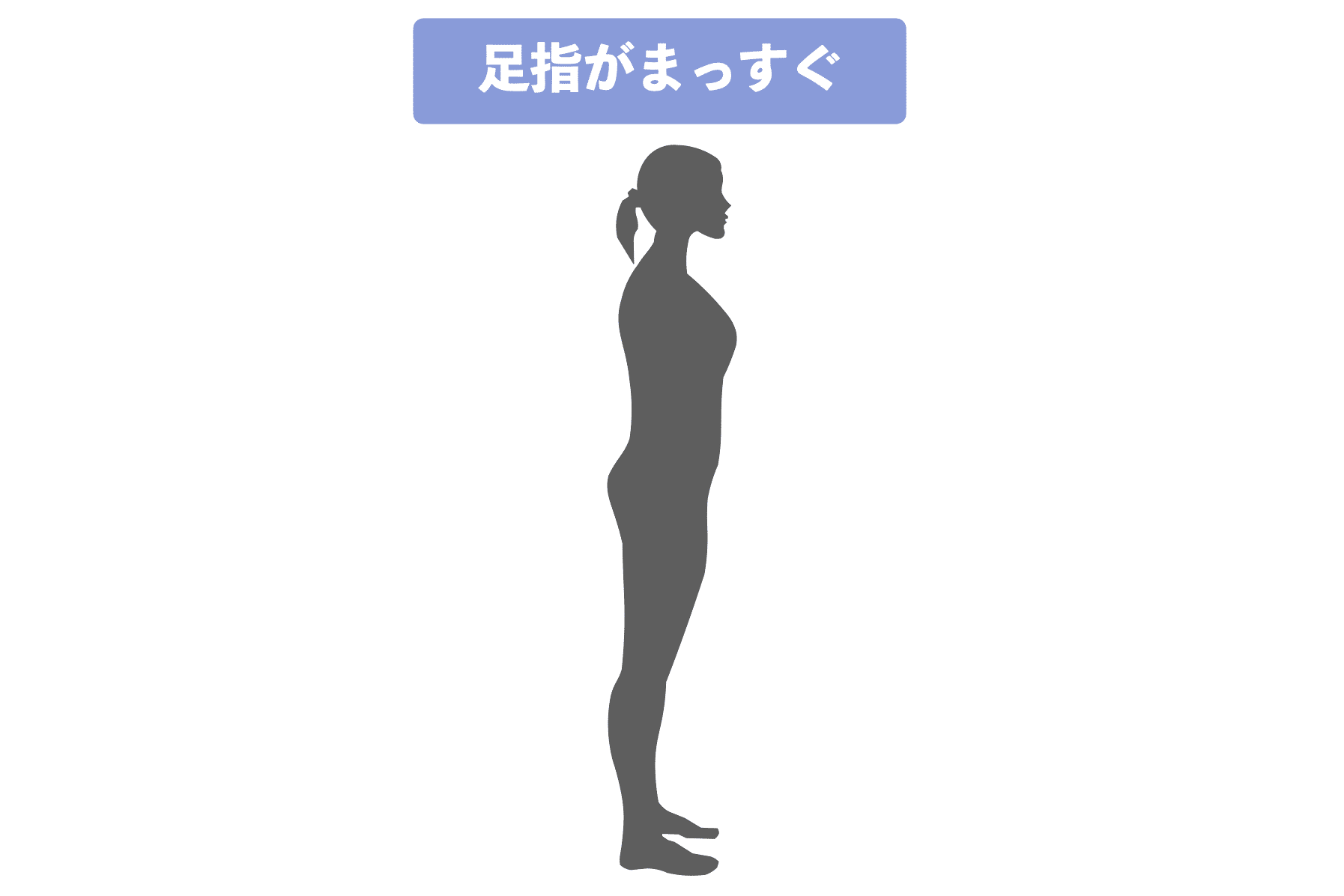
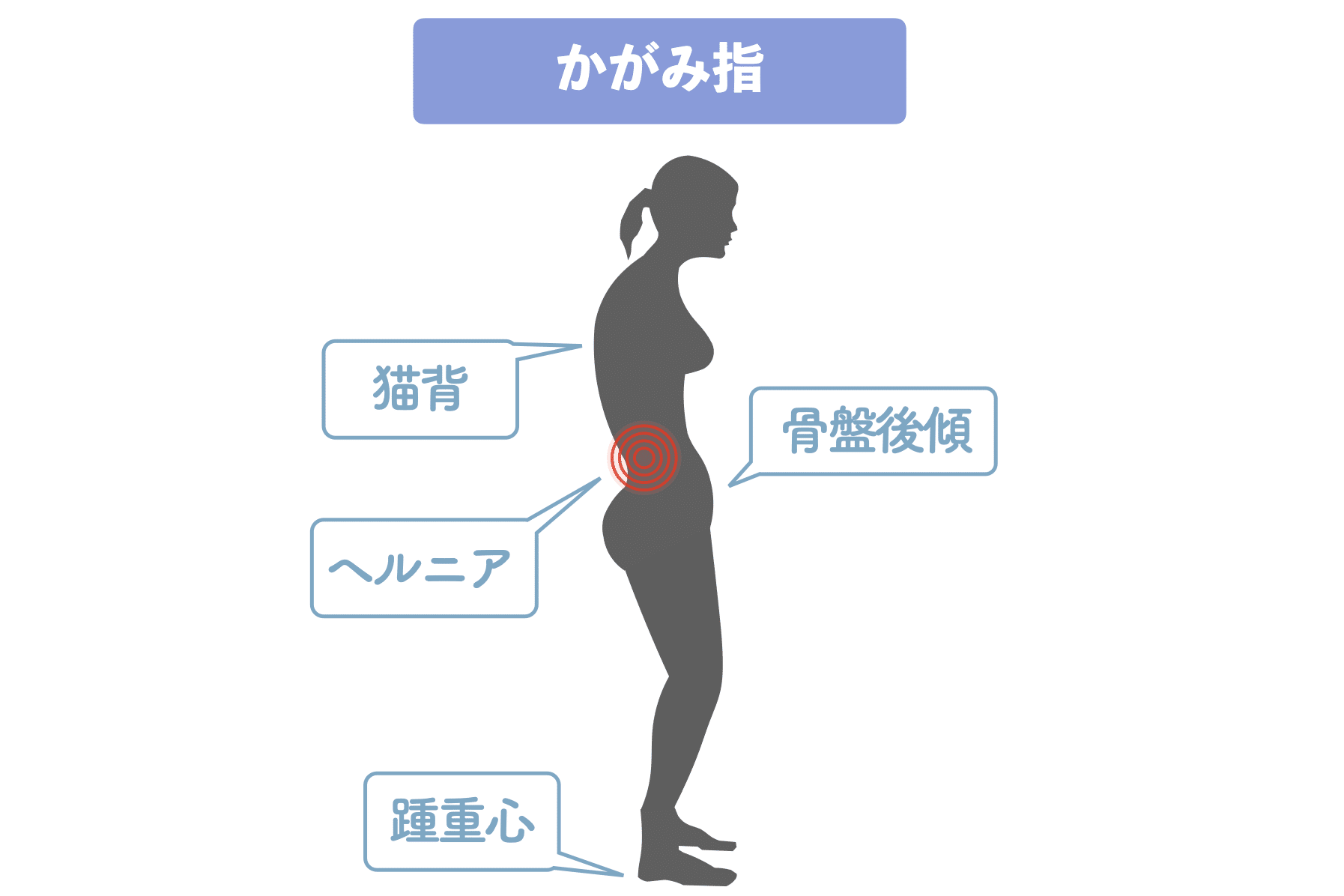
When the toes are bent or floating, the body weight is placed closer to the heel (heel center of gravity). The heel center of gravity causes the posture to fall backward, but the body tries to maintain balance by tilting the trunk forward or backward. This is also called postural control. This causes a flat or hunched back, but the physiological S-curve of the spine is lost, which causes pressure differences in the intervertebral discs, resulting in herniation.
Both of these are caused by postural changes due to toe deformities,Unless you treat the "toes" that make up your posture and the shape of your legs, you have nothing to treat a herniated disc!You will find that
Deformity of the toes and its causes
Most people today have deformed toes due to the wrong choice of shoes and socks, and the way they wear them.and the foundation is collapsing. Please refer to the following website for more information.
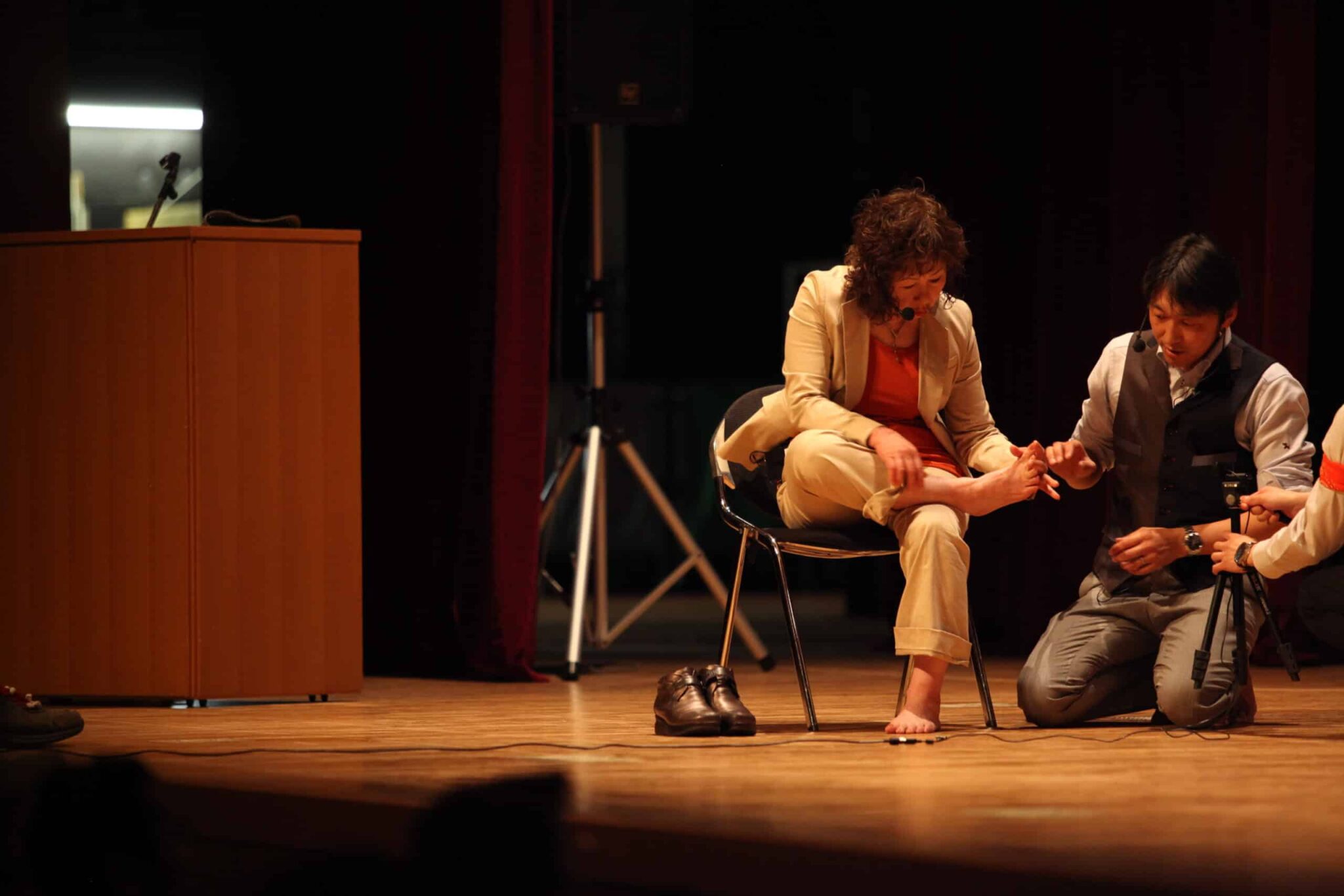
Inspection and Self-Check
Following are some common symptoms to check yourself for when you suspect a herniated disc.
- Back pain or sciatica: pain or numbness in the lower back, buttocks, or back of the legs
- Pain or numbness in the arms and hands: pain or numbness from the shoulders to the tips of the fingers
- Muscle weakness or sensory abnormalities: muscle weakness or sensory dullness
- Dyspnea: difficulty walking because of pain or numbness while walking
If these symptoms are present, a herniated disc may be the cause. However, if symptoms occur only under certain circumstances, it is important to consult a specialist, as they may be due to other diseases or factors. Early improvement can be achieved by correcting the toes, improving posture, and selecting and wearing the correct shoes.
Self-check for numbness
When a herniation presses on a nerve, neurological symptoms (pain and numbness) occur. Depending on the location of the herniated disc, the nerve symptoms may occur in the hip, calf, or other parts of the body.
To check this, there is a "diagram of the innervation of the dermatome". The dermatome is also called the cutaneous segment or dermatosensory zone,It represents the area of sensation (touch, pain, temperature) on the surface of the skin for each nerve root leaving the spinal cordThe following is a list of the most common problems with the
C2-8 (2nd to 8th cervical nerves) ・T1-12 (1st to 12th thoracic nerves) ・L1-5 (1st to 5th lumbar nerves)
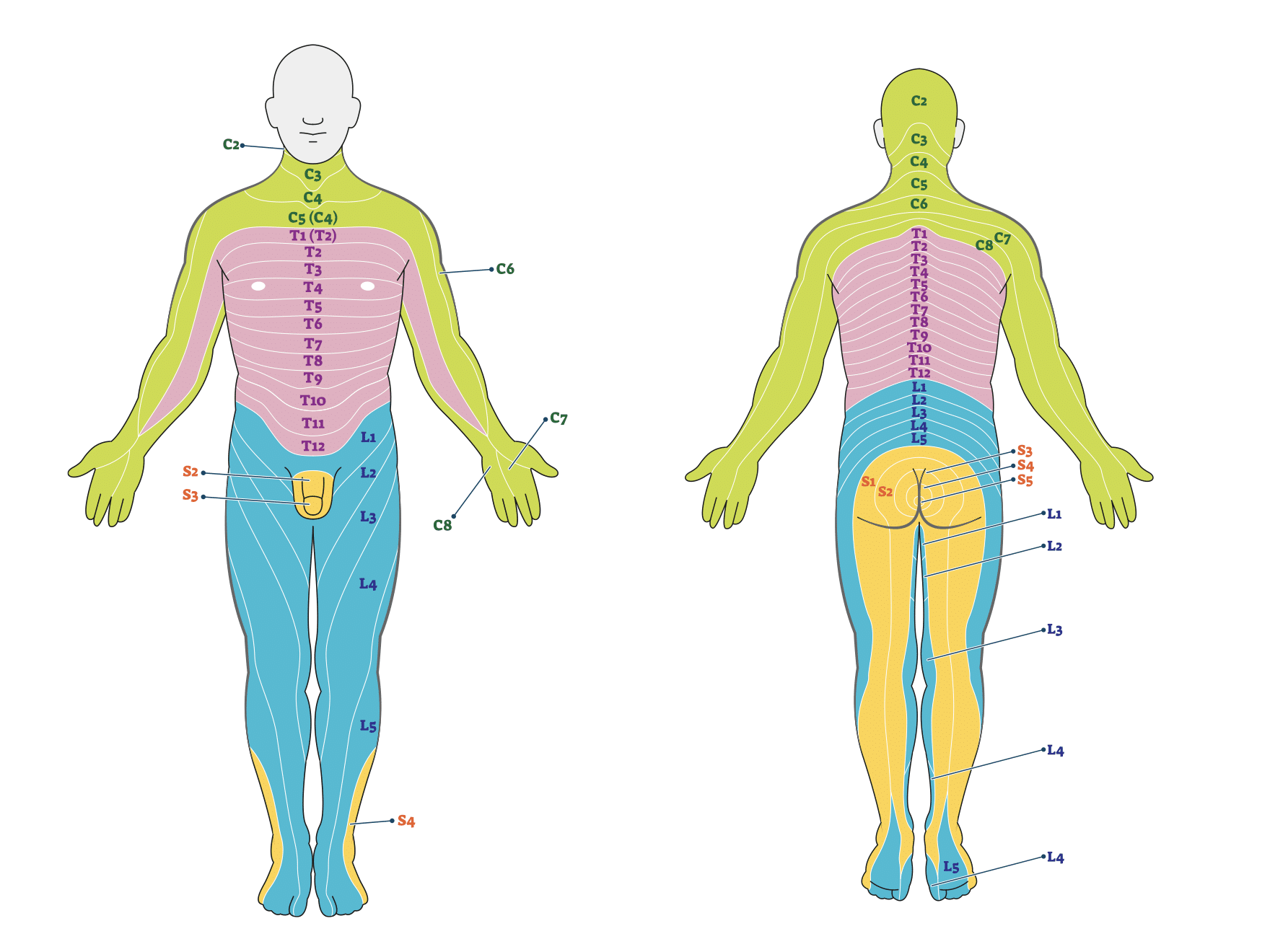
For example, if the 4th and 5th nerve roots of the most common lumbar vertebrae are affected by a herniated disc, you will notice sensory disturbance in the areas marked L4 and L5. If you experience sensory disturbance (numbness or paresthesia) or muscle weakness (weakness) in the area shown in the figure below, there is a high probability that you have a "herniated disc. It is common for symptoms to extend from the thighs to the feet.
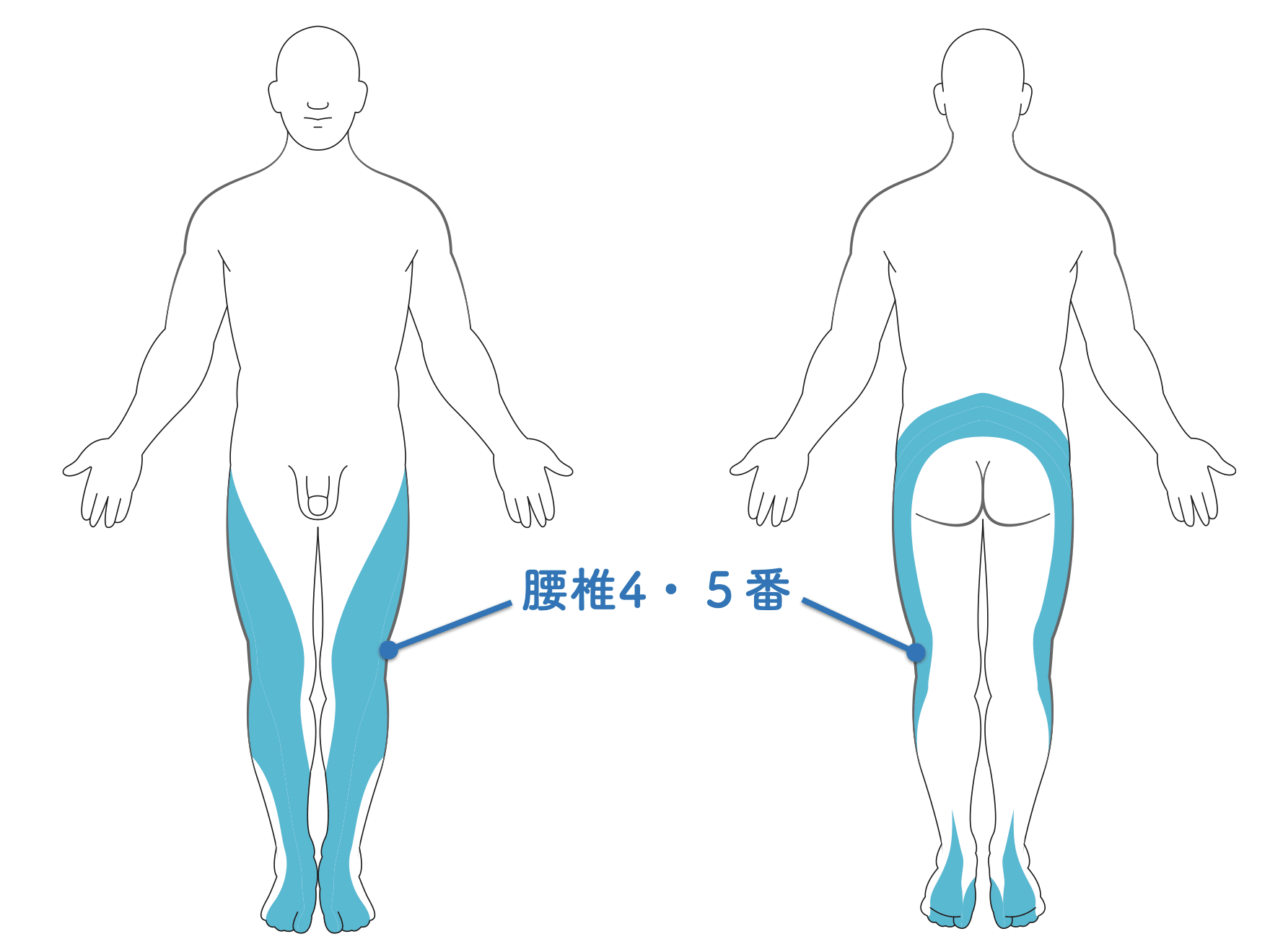
This paresthesia is important for the diagnosis of hernias.The location of the hernia and the height of the neuroinflamed nerve can be determined by the location of the perceptual dullness.If the height of this nerve matches the MRI image, a herniated disc can be diagnosed. If the MRI image is the only determination, or if the area of compression and the area causing symptoms are different from the dermatome, then it is likely not a herniated disc.
Posture Self-Check
First, take a picture of your posture from right beside yourself with your phone or other device. Take the picture so that the center point of the phone is at the center of your body. It is a good idea to make sure that the leveler is positioned at your navel.
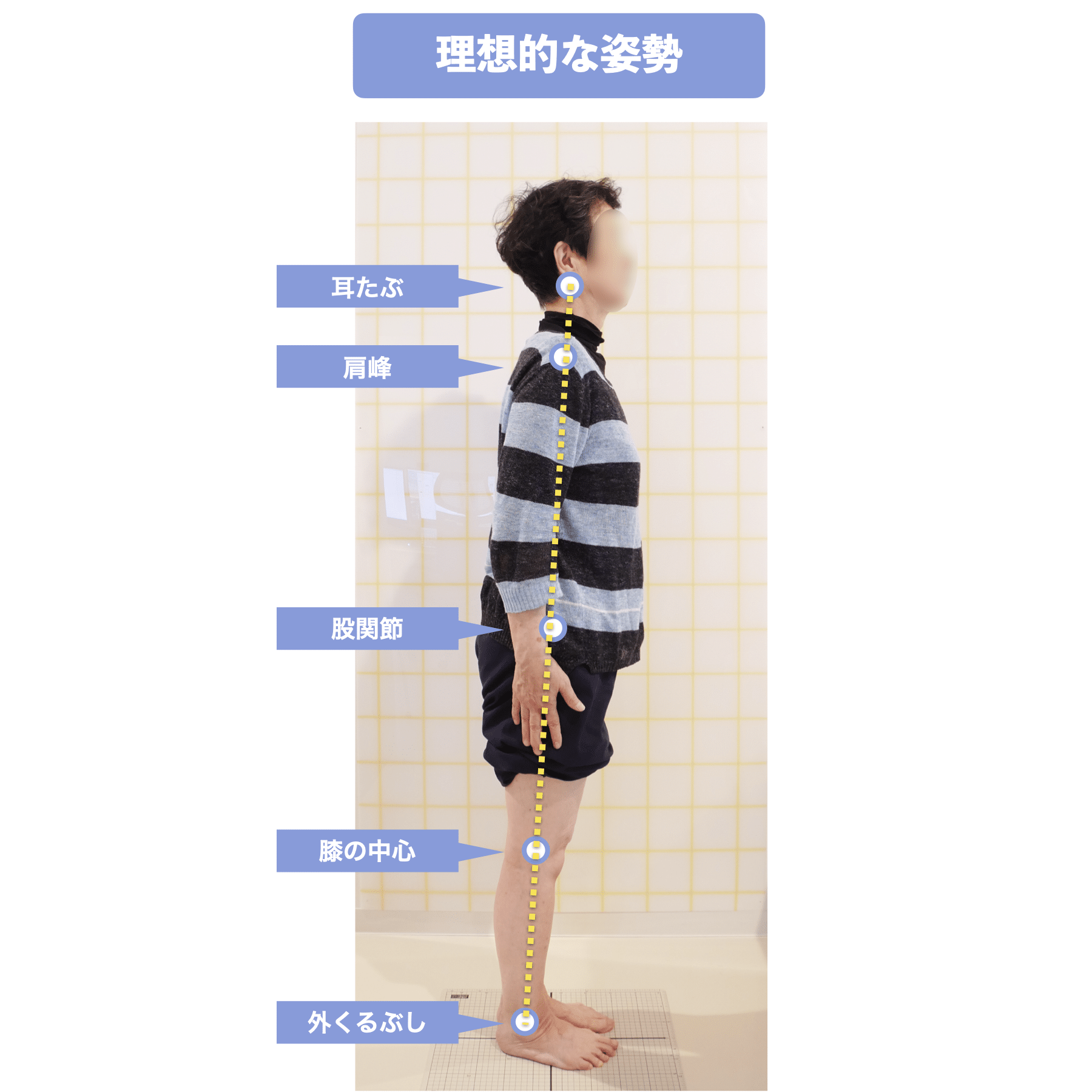
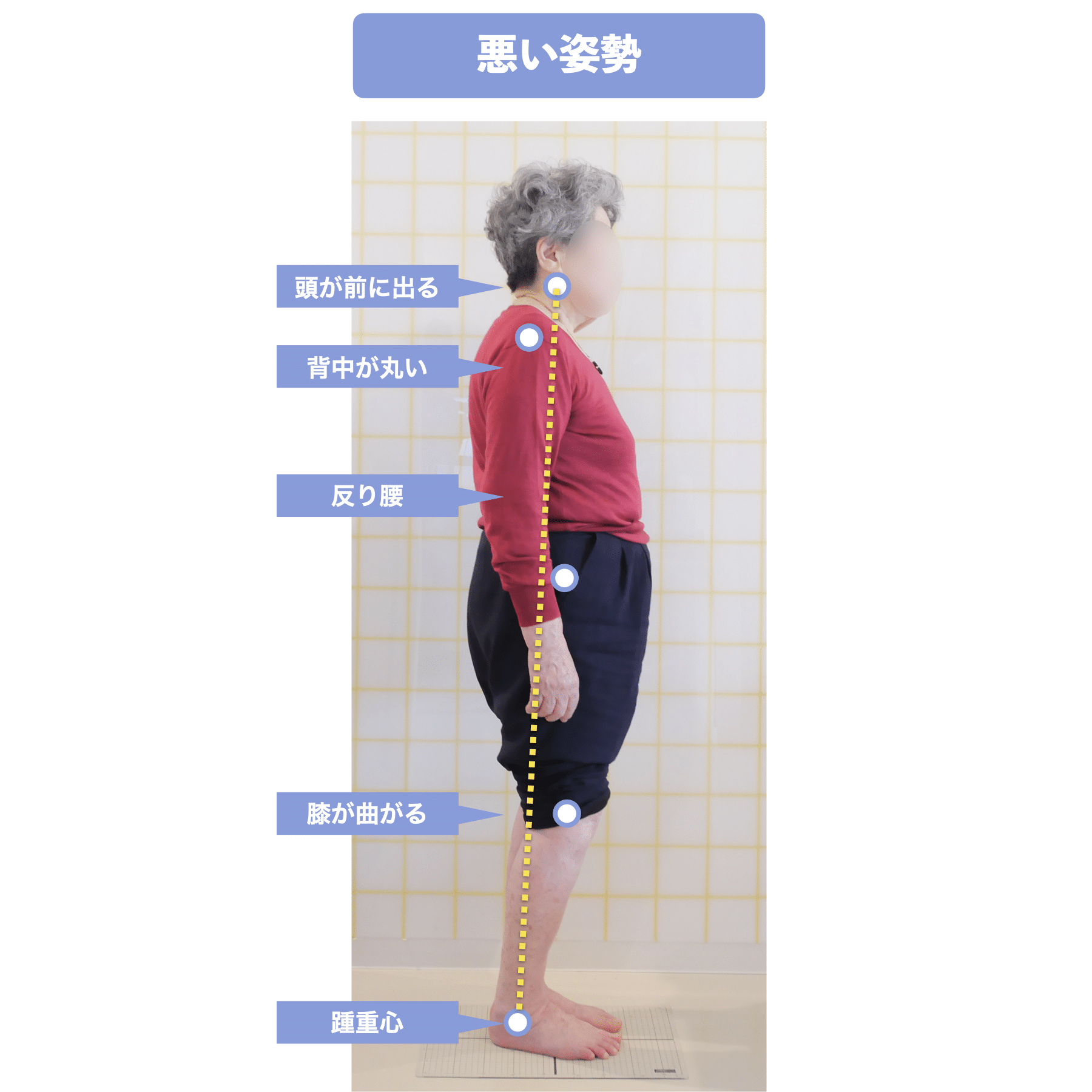
Next, connect the earlobes (earlobes) to the external ankles (outer ankles) of the feet with a line.The ideal posture is if (1) the center of the knee, (2) the greater trochanter (hip joint), and (3) the acromion (center of the shoulder) pass through that straight line.If you have trouble drawing a line, use a ruler to align the earlobe with the outer ankle. If you are not comfortable with drawing lines, use a ruler or similar tool to align the earlobes with the outer ankles.
If any of (1), (2), or (3) is out of alignment with the straight line, you are standing with your neck forward in a hunchback or warped back (except for some with a warped back). How did you feel? I think most of you had a hunchback or warped back.
medical treatment
Treatment options for herniated discs generally include the following
1. Conservative treatment: Methods to relieve pain and disc compression. These include rest and maintenance of proper posture, physical therapy (massage and traction therapy), medication (pain medications and anti-inflammatory drugs), physical therapy (exercises and stretching), and injection therapy (steroid injections and nerve blocks).
2. Surgical treatment: This is performed when conservative treatment is ineffective or when symptoms worsen. Surgical treatment includes discectomy, artificial disc replacement, and fluorescent protein induction.
Because a herniated disc is a condition in which a disc prolapses and compresses a nerve, the disc may return to its original position over time. Proper physical activity, postural modification, and weight control are important for natural healing to progress. The above treatments (conservative therapy) may provide temporary relief of symptoms, but they do not cure the herniation. In our experience, surgery is required in less than 1% of cases.
basicallyTo cure the root cause, toe care should be provided and posture should be improved.It is important to prevent the disc from wearing out at the disc and to prevent the disc from being subjected to forces that would cause it to protrude backward.
drug
Herniated discs are treated with medications to relieve pain and inflammation. The following are examples of commonly used medications. They are only for temporary relief and do not cure the underlying cause.
1. Painkillers: May be prescribed to relieve pain. Nonsteroidal anti-inflammatory drugs (NSAIDs) such as acetaminophen and ibuprofen are commonly used.
2. Steroid medications: may be prescribed to reduce inflammation. They may be used in the form of tablets taken by mouth or injected.
3. muscle relaxants: may be prescribed to relieve muscle tension. Commonly used are carbamazepine and baclofen.
4. anti-inflammatory drugs: may be prescribed to reduce inflammation. Medications such as chloroquine and hydroxychloroquine are used.
Exercise and Physical Therapy
Physical therapy for herniated discs includes the following methods, which are rarely effective
1. Exercises and stretching: Certain exercises and stretches can help balance muscles and improve symptoms. In particular, strengthening the abdominal and back muscles can help reduce strain on the lumbar spine.
2. Electrotherapy: Electrical stimulation is used to stimulate muscle contraction and relieve pain.
3. Manipulative therapy: Manual therapy performed by judo therapists and osteopaths, which helps to alleviate pain by adjusting the distortion of intervertebral discs and joints.
4. Aerobic exercise such as walking and swimming: Continued light exercise helps maintain muscle strength and support the spine.
5. Weight control: Proper weight control is important because overweight or obesity increases the load on the lumbar spine.
procedure
Surgery for a herniated disc is performed when a portion of the disc prolapses and compresses the nerves and spinal cord, causing pain and numbness in the legs, though,This is mainly done when there are paralyzing symptoms or when the thighs are different in thickness from one side to the other.Surgical procedures vary depending on the patient's symptoms and condition, but generally include the following
1. Discectomy: Surgery to remove a portion of the intervertebral disc that was compressing the nerves and spinal cord. This surgery is relatively simple and is usually performed under local anesthesia.
2. Discoplasty: This is a surgery in which a drug is injected into the intervertebral disc to push back the disc bulge. This method is a relatively new treatment and is considered less burdensome to the patient than conventional surgery due to the low risk of the procedure.
3. Microdiscectomy: This surgery uses a microscope or operating microscope to remove a portion of the intervertebral disc. This surgery is considered to result in a relatively quick recovery because the wound is small and there is little damage to the surrounding tissues.
Surgery for herniated discs is considered when symptoms are severe and do not improve with conservative treatments or when neurological symptoms have progressed, though,Since evidence has shown that they heal spontaneously, surgery is no longer performed as aggressively as in the past.
self-care
A herniated disc is a condition that causes pain in the back and neck, but self-care in daily life can help alleviate symptoms. Below are some self-care tips for herniated discs.
1. Maintain proper posture: In the case of a herniated disc, poor posture can worsen the pain. Try to maintain proper posture by spreading and stretching your toes.
2. Moderate exercise: Moderate exercise not only maintains muscle strength, but also improves blood circulation and relieves pain. However, since strenuous exercise can be counterproductive, try to walk about 6,000 steps per day.
3. Cooling or warming: In the case of a herniated disc, it is important to reduce inflammation. Cooling pads can be used if inflammation is present, and warming can relieve pain if muscle tension is high.
4. Use proper bedding: Improper bedding can aggravate the pain. Avoid using mattresses and pillows for back pain, and use firm bedding and bath towel pillows, and pay attention to your sleeping position.
5. Manage stress: Stress can cause muscle tension and worsen pain. It is important to find appropriate ways to manage stress so that it does not build up.
Self-treatment of a herniated disc can not only help improve symptoms, but also prevent recurrence. However, if symptoms worsen or do not improve with self-treatment, it is important to take care of the toe as soon as possible.
Hironoba Exercise, a toe stretch that improves herniated discs
Try doing this once a day for 5 minutes; if you do not see any change in your symptoms after 2-3 days, we recommend increasing the number of times to 2-3 times a day. The goal is to be able to do the toe par for 30 seconds.
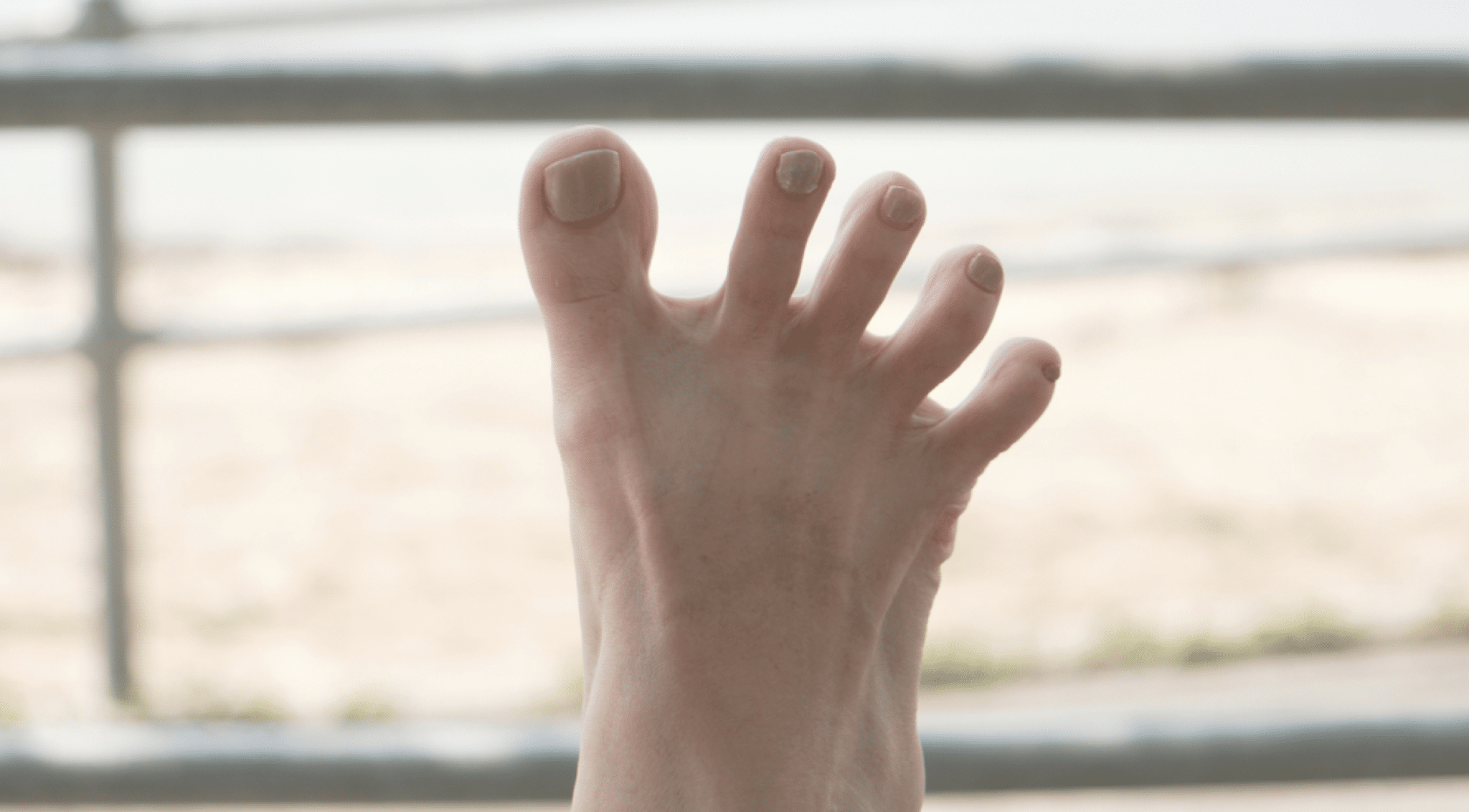
Corrective 5-finger socks for optimal posture support
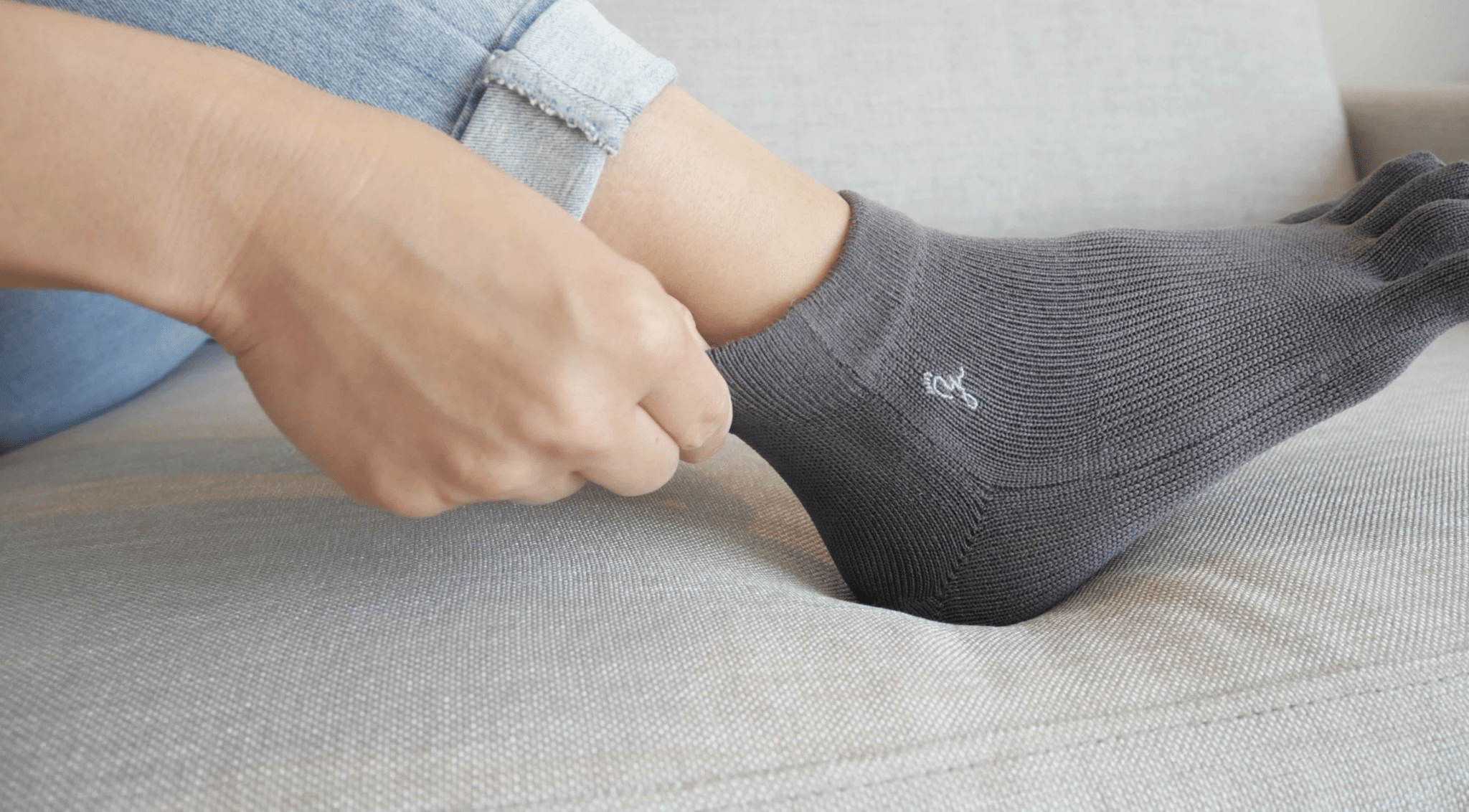
We have produced functional 5-finger socks made of cotton and silk and tried them on many patients in clinical settings, but we were unable to solve the problem of feet slipping in shoes and socks. Therefore, we spent two years working with a textile company to perfect the ideal fiber, and the corrective 5-toed socks "YOSHIRO SOCKS" were born. If you suffer from herniated intervertebral discs, give them a try.
Moderate walking eliminates herniated discs.
To make it more effective
By making small changes in daily life, such as toe stretching and wearing corrective five-toed socks (YOSHIRO SOCKS), you can maintain correct posture and improve inflammation of the muscles around the shoulder.
Walk with a small gait.
∙ Activities that involve the use of toes, such as walking up hills and stairs
. Avoid wearing footwear indoors.
Try to walk at least 6,000 steps a day.
Make sure the laces are tight.
...Avoid using ordered pillows and mats.
Choose the right shoes.
Use a shoehorn to put on your shoes.
Stretching the toes and walking with corrective five-toed socks (YOSHIRO SOCKS) helps to use the toes functionally.(1) Toe deformity improved → (2) Correct center of gravity position → (3) Improved posture → (4) Herniated disc resolvedThis is the flow of the project.
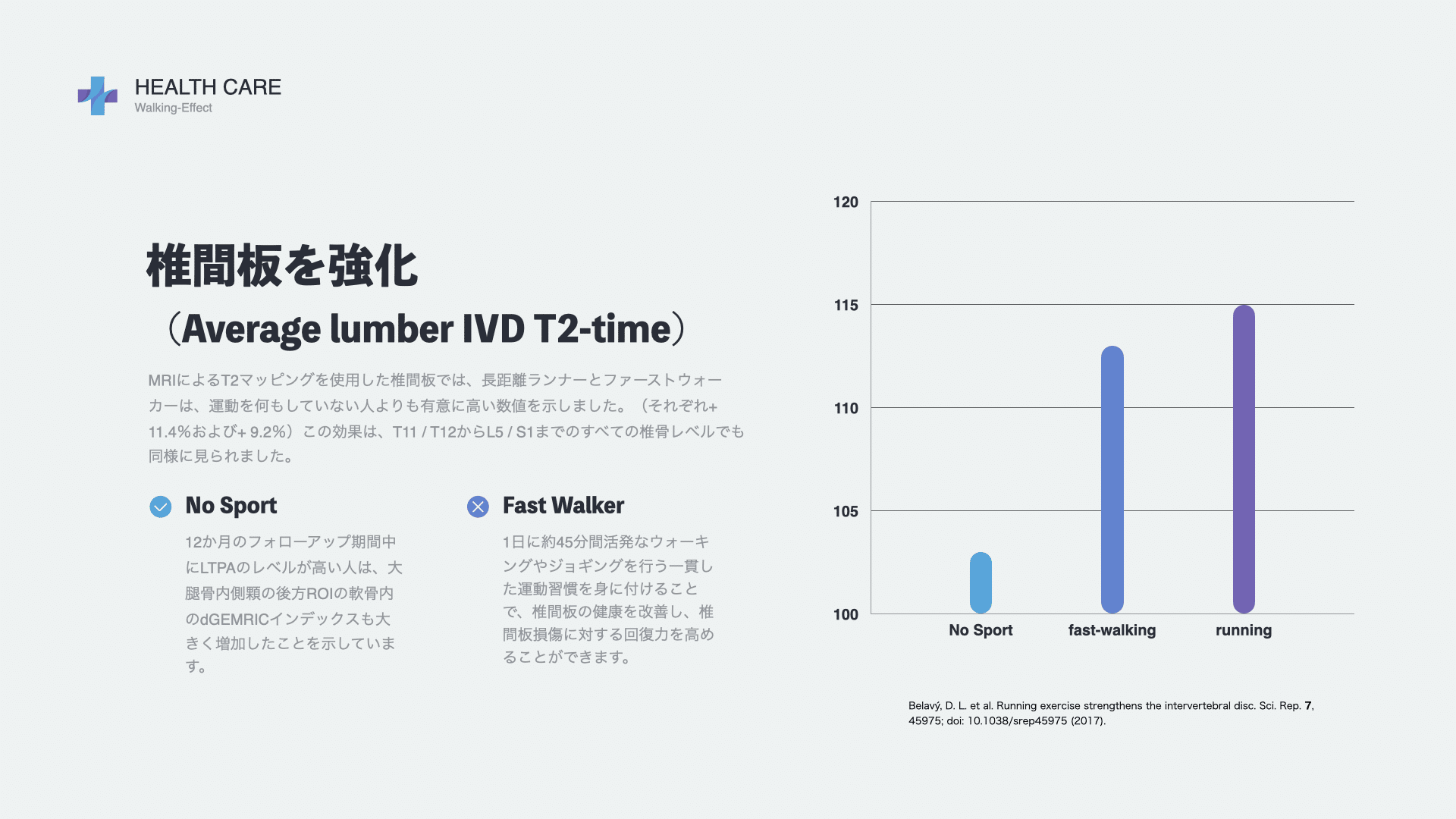
Intervertebral discs thin with age, but can be strengthened by walking. The evidence above shows how much the thickness of the intervertebral discs changed, divided into groups of "non-walkers, walkers, and runners".
Walking or jogging 5 hours per week (45 minutes per day) results in 11.4% disc hypertrophy in 12 weeksis seen, and the intervertebral discs in the spine can be healthy and strengthened (thickened).
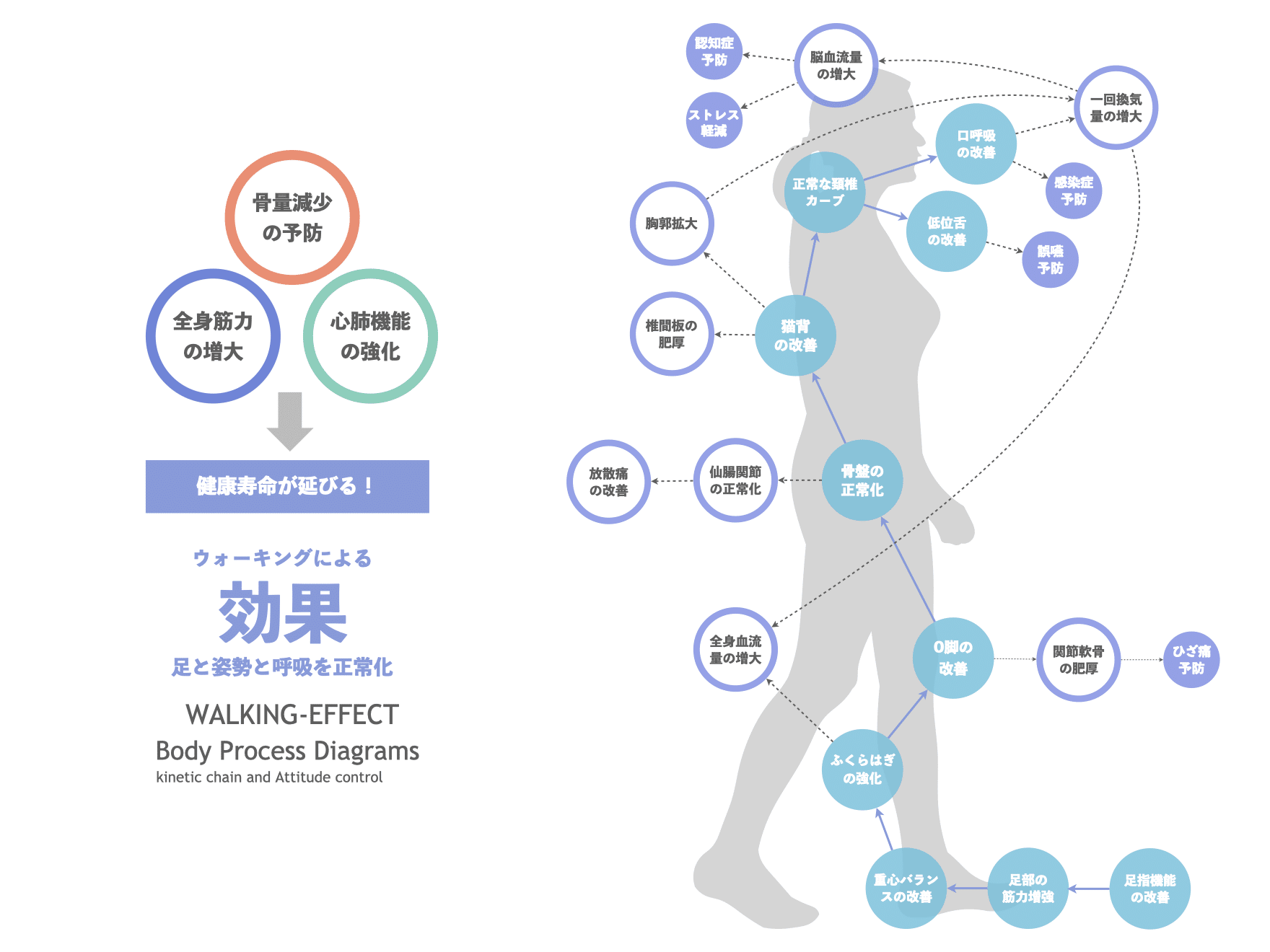
Correct posture is created by correct muscles.Correct muscles can only be built by walking with "toes spread and extended"!The goal is to walk at least 6,000 steps per day. Aim for 10,000 steps per day.
How to choose the right shoes
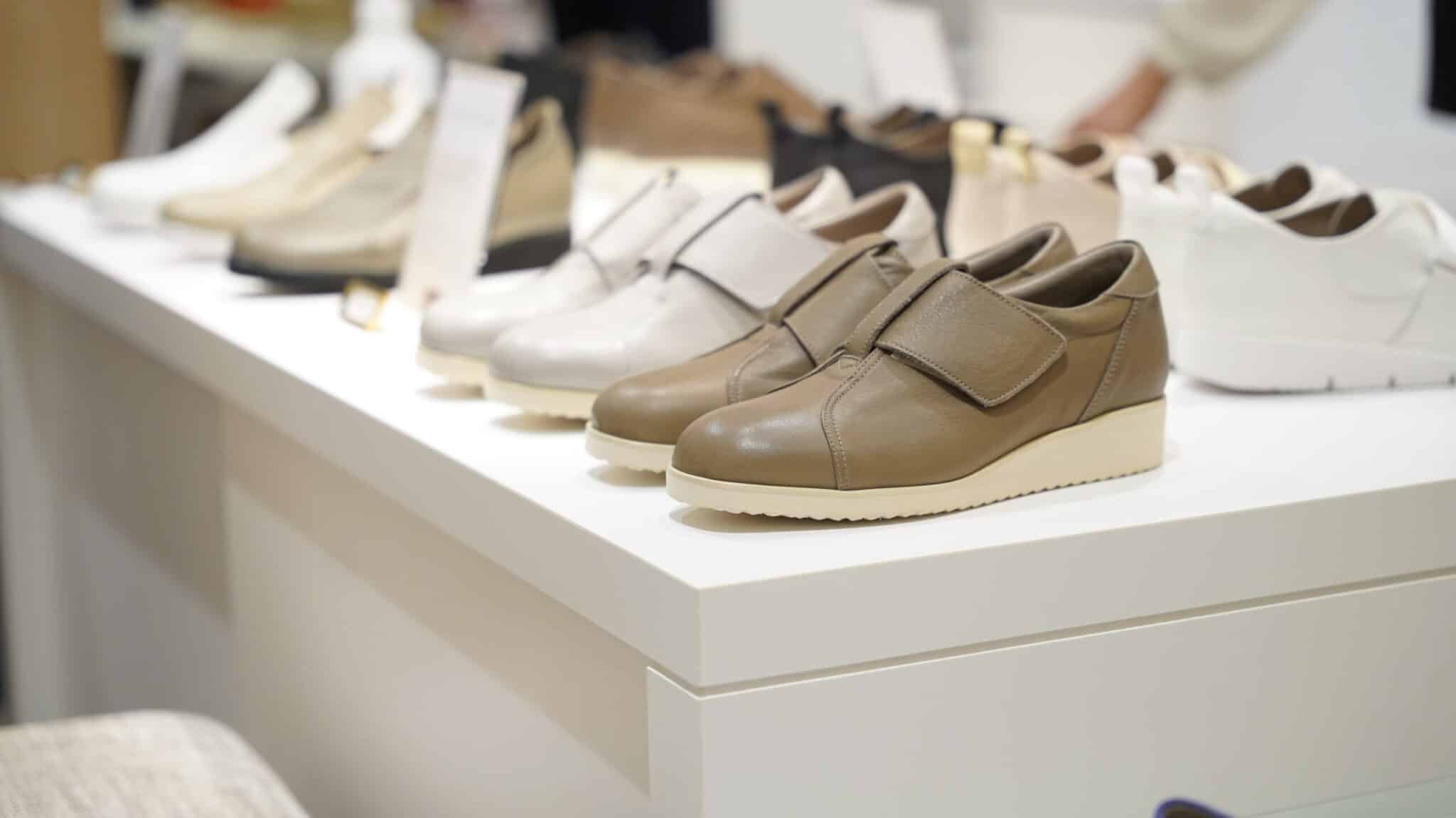
The most common cause of toe deformity is the choice of shoes and how they are worn.Many problems such as stiff shoulders and stiff necks are caused by not using the toes properly. Few people would think that because the feet and the person are located so far away from each other, it is hard to pinpoint. If you are suffering from a herniated disc, please take this opportunity to review your feet.
How to choose the right socks
Pure cotton and silk materials are slippery
There is a silken finish (or mercerization process). Silkette treatment is a process that gives silk-like luster to yarns, and involves soaking yarns in a caustic soda (sodium hydroxide) solution and stretching them like hand-pulled udon noodles to straighten the cross section of the yarns. It is overwhelmingly used mainly for cotton and silk fibers (cotton).
The cross-section of the cotton is aligned, coloration is improved, and fluff is suppressed when processed, giving it a luxurious appearance. It is smooth and slippery to wear, but as the words "smooth" and "slippery" suggest, it is easy for the feet to slip inside shoes and socks. In other words, it is a material that can easily cause deformation of the toes.
Of course, there are cotton and silk materials that are not silken, so choosing such materials is also an important factor in preventing knee pain.
Five-toed socks allow toes to function.
Common socks are also called tube socks, and most people around the world have this type of socks. It is a shape that has been used for many years, but the tube type makes it difficult to use the toes properly. For this reason, socks with five separate toes are better, but there are many different types of this type.
The most important thing is to make sure it fits your own feet just right.The socks should be worn with a soft, comfortable, and comfortable footwear. If the fingertips or instep area is loose, even a good 5-finger sock will "slip". On the other hand, 5-finger socks that fit too tightly and feel oppressive are not recommended, as they can impede blood circulation. It is important to find 5-toed socks that feel "comfortable" when you try them on.
There are more and more socks with corrective power, but when I tried them, I found that many of them press down more strongly than I expected. Particularly in the area of the arch of the foot.Supporting the arch is important, but arch structure is a property that can lose its function if it is lifted too stronglySo, be sure to choose an arch that is also not too oppressive.
When you take it off, you say, "Ha, that feels good!" then the pressure is too strong.This is the case.
story of one's experience
Ms. M, a woman in her 30s, had been going to an osteopathic clinic because of back pain for some time, but gradually became unable to put on pants, stand up, or carry heavy objects, and this began to interfere with her daily life, so she visited an orthopedic surgeon. An MRI was taken at the hospital,Diagnosis of "herniated disc," in which the nucleus pulposus protrudes and compresses the nerveI was told that I needed to be hospitalized immediately. I was told that I needed to be hospitalized immediately, and in the beginning I was forced to live with a walker. Furthermore, the muscles in my lower body became thinner and the pain and numbness became worse. After that, I was hospitalized for about six months and did rehabilitation twice a day.
I recovered little by little,Without a cane, she wobbles and has difficulty walking up and down stairs and getting up from a chair because she has no strength in her left leg.It was. My knee began to crack, probably due to the lack of strength in my left leg, and I began to have knee pain from overloading it. My calf was also tingling, my walking became strange, and doing housework at home was taking so long that I had to go to bed once after working because I had pain and numbness after walking for about 10 minutes.
If she did not sleep or sleep in the morning, she had a lot of pain and numbness, and when she went outside to walk to practice walking, she often slept the next day. Even when she slept, her legs often cramped up, and she was unable to turn over in bed due to the pain in her back, making her anxious about her future. A nursery school teacher who couldn't bear to see this happen introduced her to a good person, and she came to YOSHIRO STUDIO for a consultation. She immediately started working with us.Looking at the toes, there are "floating toes" and "crouching toes"I told you that this makes it difficult to stand up from stairs and chairs because of the lack of strength in the legs and the inability to stand on them.
The MRI showed a hernia, and that "Earthing" (standing barefoot on the ground) should be done daily to promote natural resorption,The students were asked to wear "HIRONOBA EXERCISE" and "YOSHIRO SOCKS".. Gradually, my toes became stronger and my back became more stable, so I no longer needed a corset. In addition, I can now walk three sets of 45 minutes without any problems, and I can even take a trip to Tokyo Disneyland. The longer time he is able to walk has given him more strength, and he now has more energy than a healthy person.
I am able to do household chores faster and no longer have to rest even after working. The power of YOSHIRO SOCKS is amazing," he said.MRI images also showed that "the hernia is being absorbed naturally.He said that the feeling of security that he had regained was what made him decide to seek reemployment.

It is very easy to improve. All you need is "HIRONOVA EXERCISE" and "YOSHIRO SOCKS".
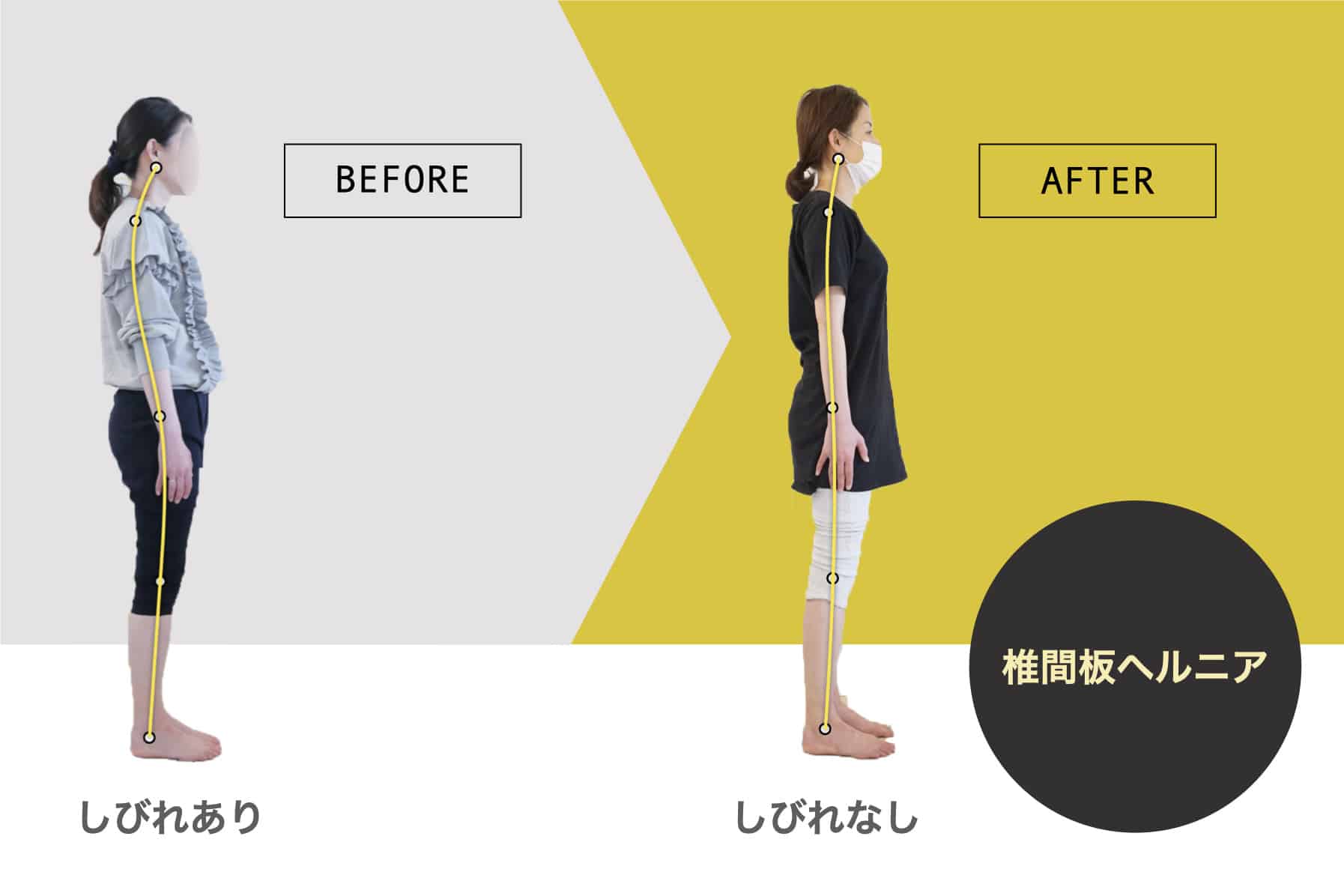
References
Functional Anatomy and Physical Therapy of Hallux Valgus. Yuasa, Keiro. Physical Therapy Vol.31 No.2 2014.2 P159-165
2. "Shift Your Toes and You'll Be Healthy" by Keiro Yuasa/author, PHP Kenkyujo, 2014.6
3. "Your back and hips will never get bent again in your life by grabbing your toes in just 5 minutes! Written by Keiro Yuasa, PHP Research Institute, 2021.6
4.J Bone Joint Surg Am. 1990 Mar;72(3):403-8.Abnormal magnetic-resonance scans of the lumbar spine in asymptomatic subjects. A prospective investigation.
5.N Engl J Med. 1994 Jul 14;331(2):69-73.Magnetic resonance imaging of the lumbar spine in people without back pain.
6.Spine (Phila Pa 1976). The diagnostic accuracy of magnetic resonance imaging, work perception, and psychosocial factors in identifying symptomatic disc herniations. psychosocial factors in identifying symptomatic disc herniations.
